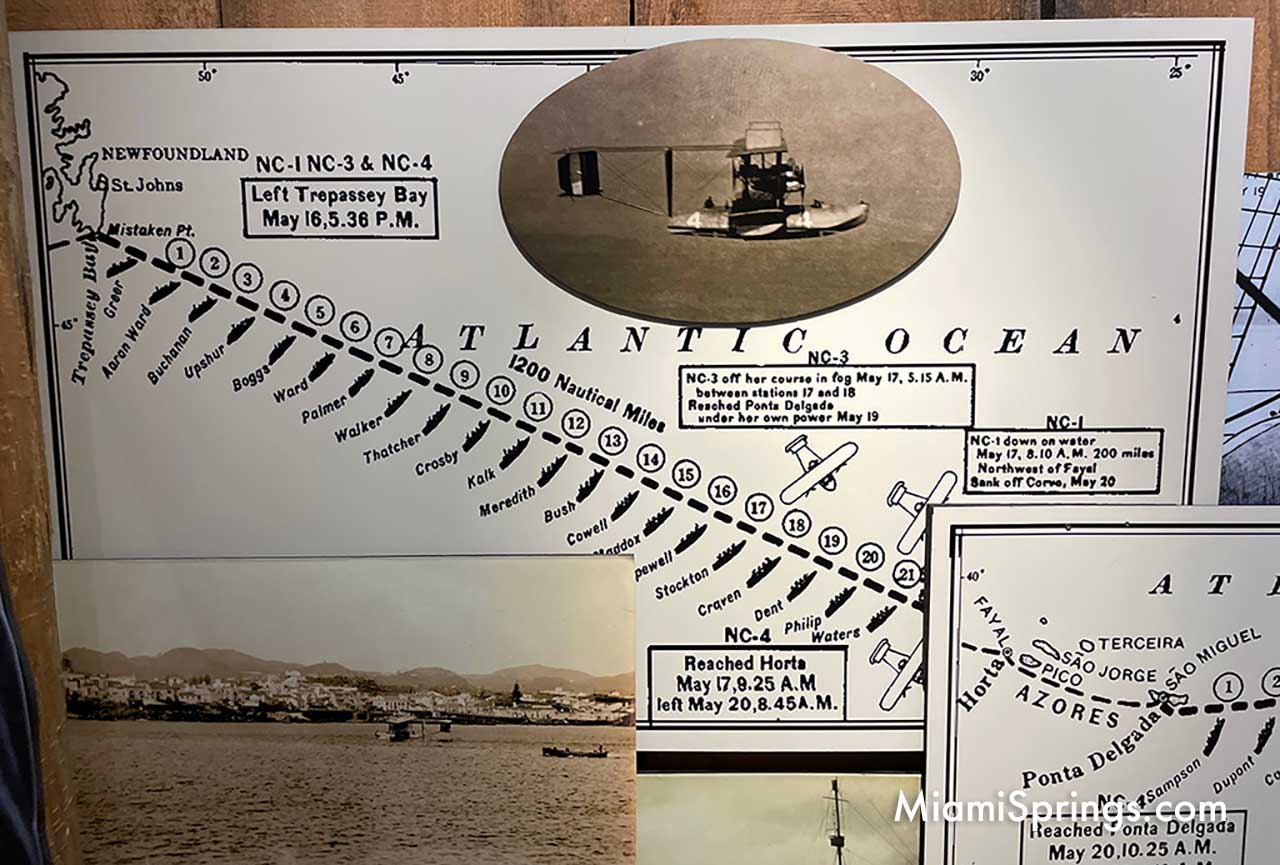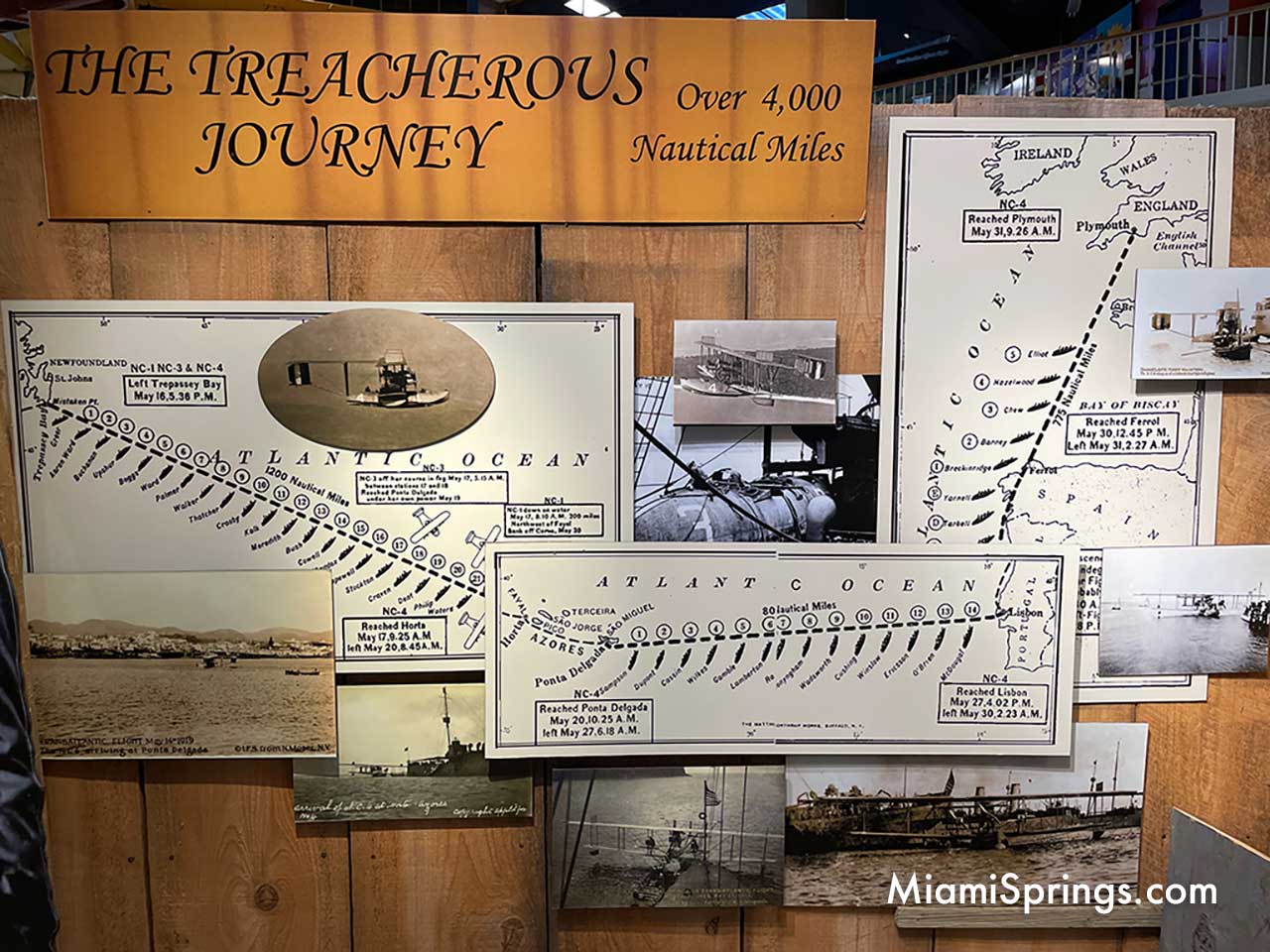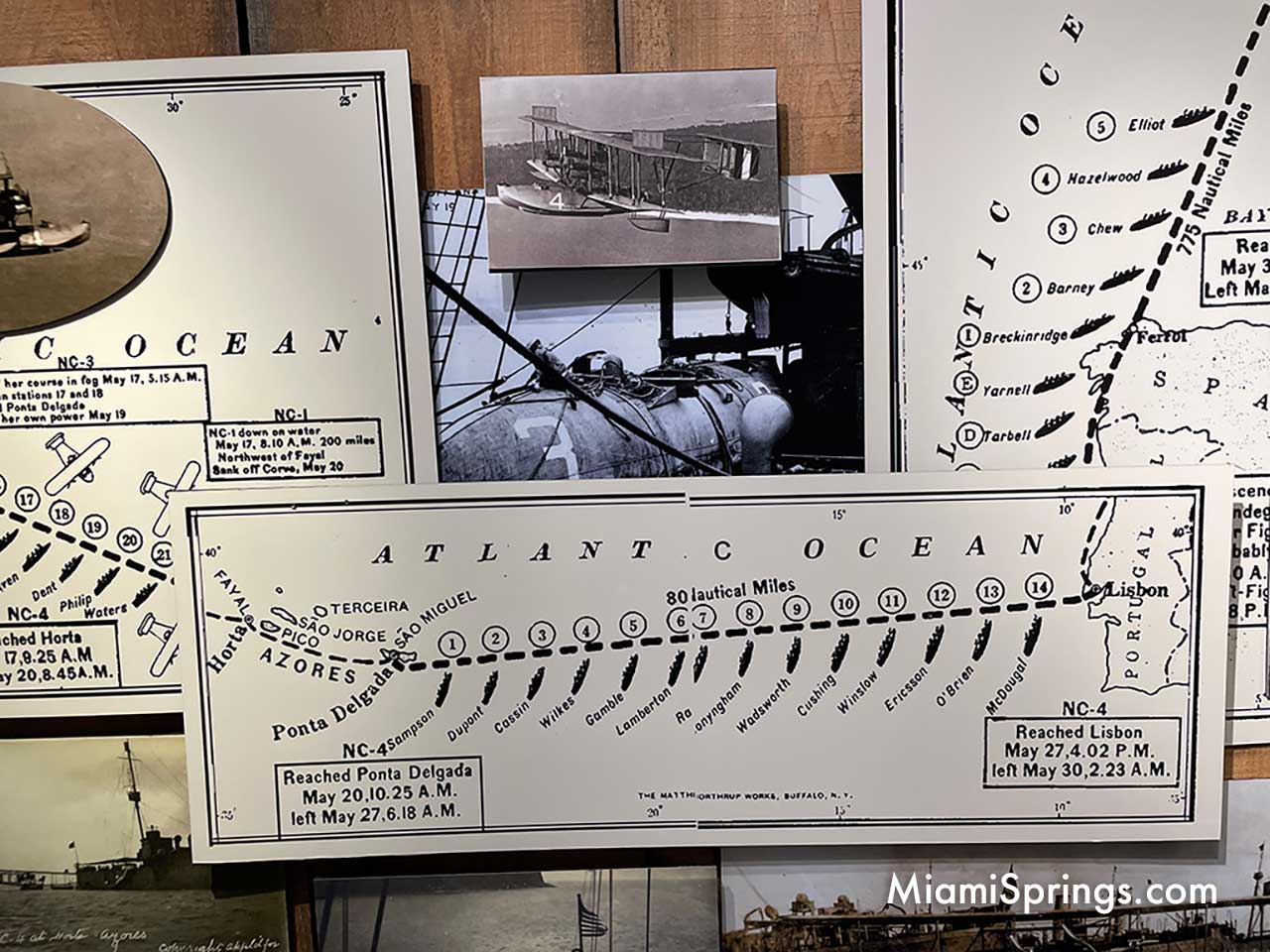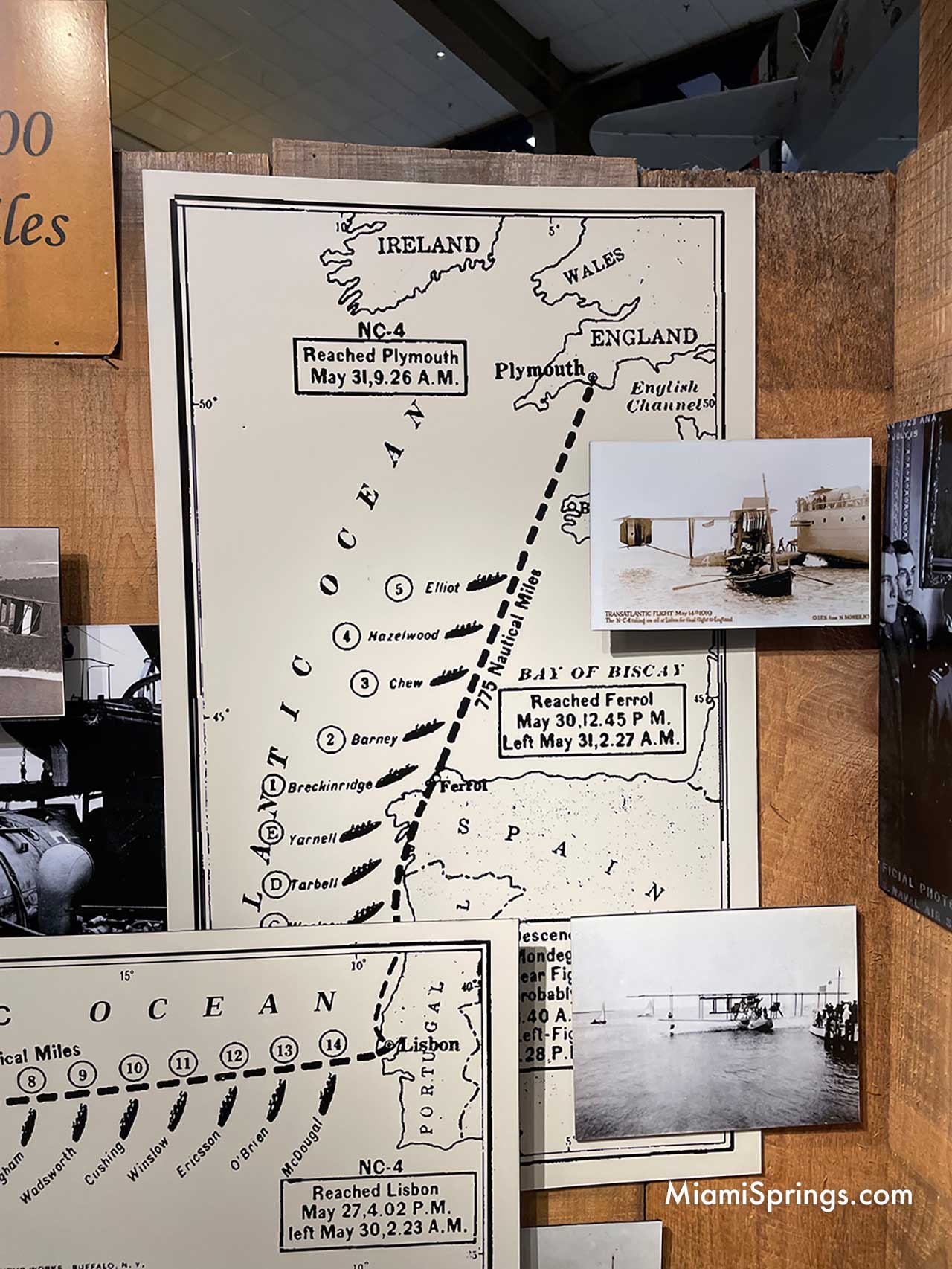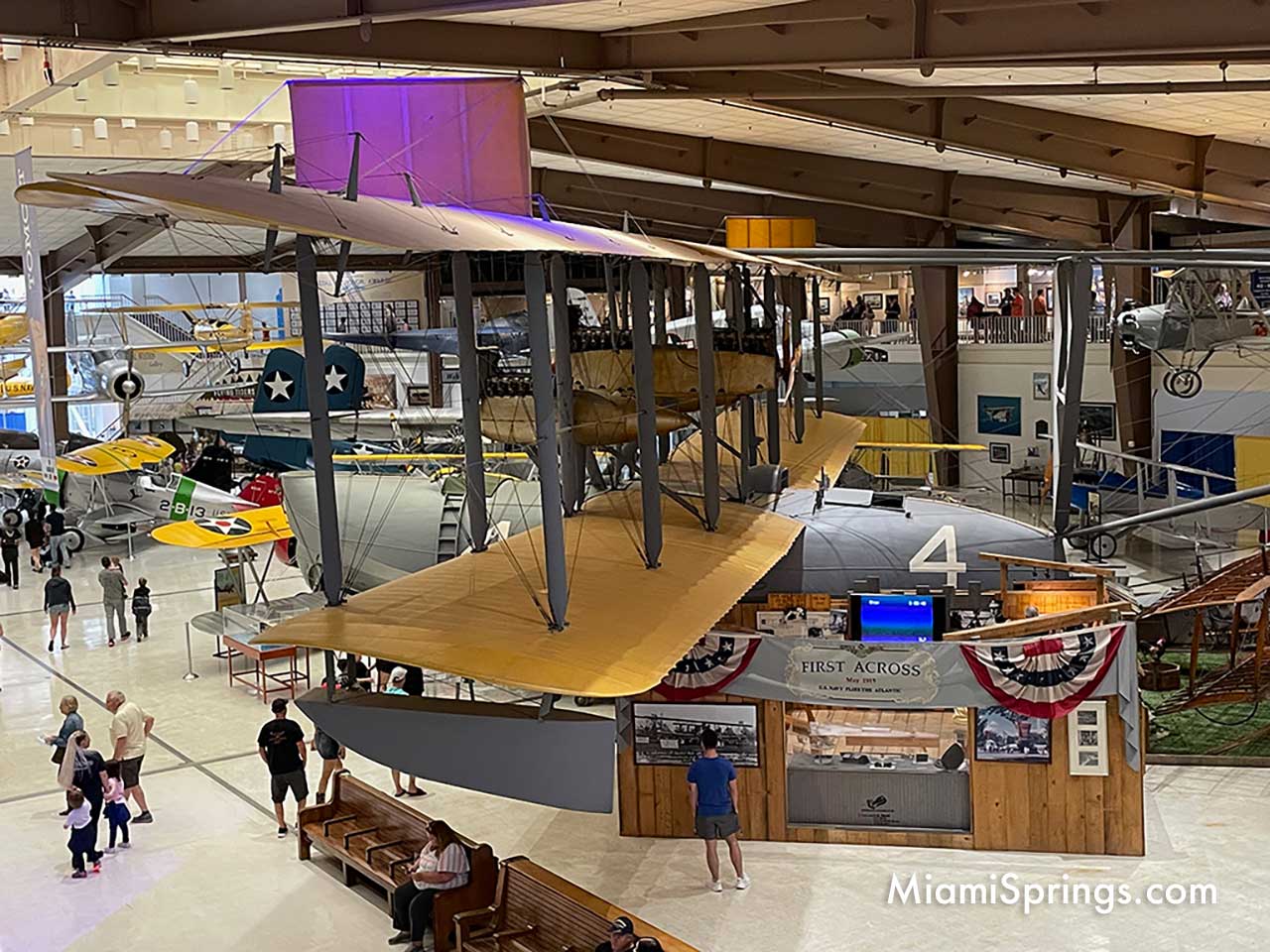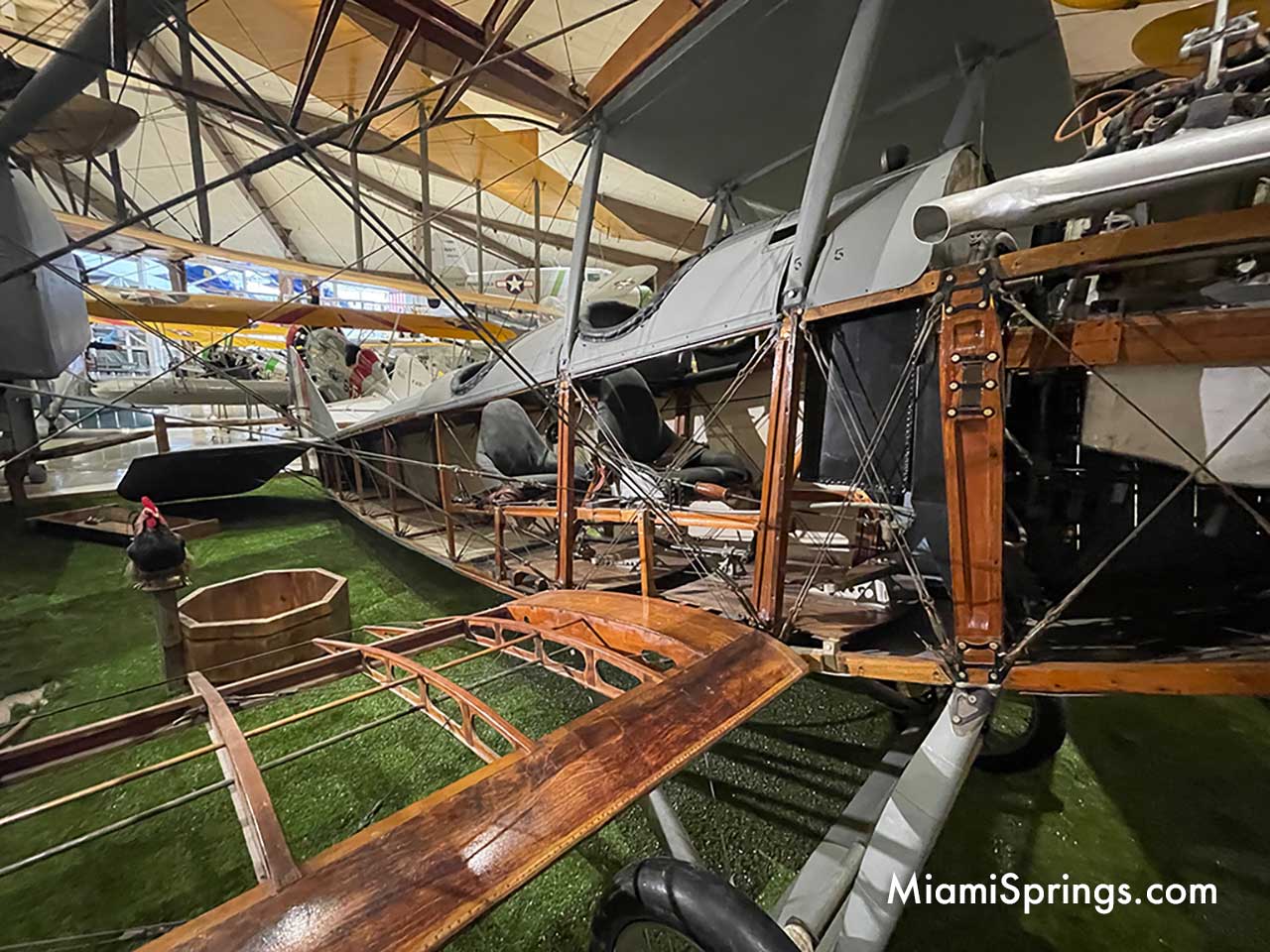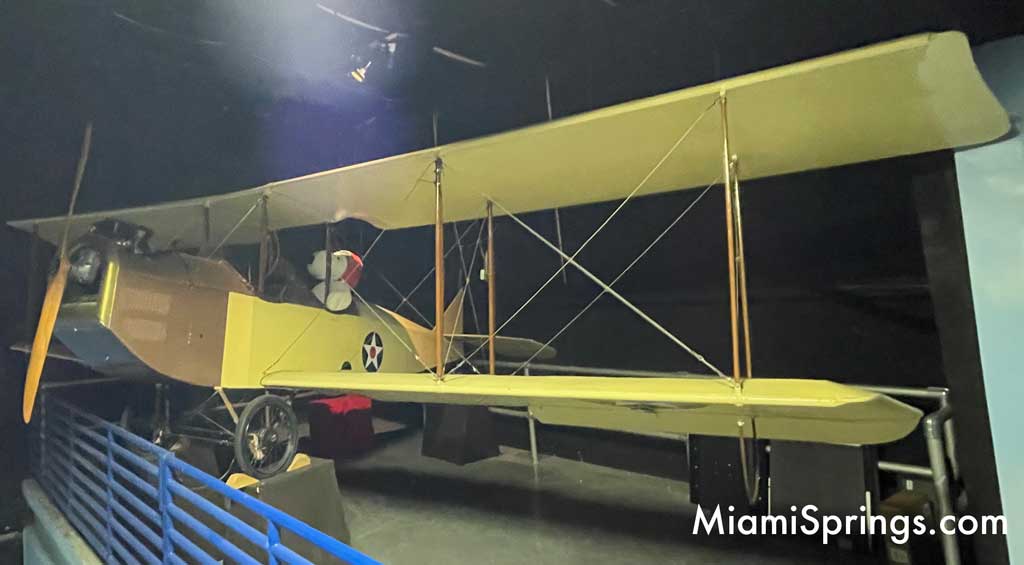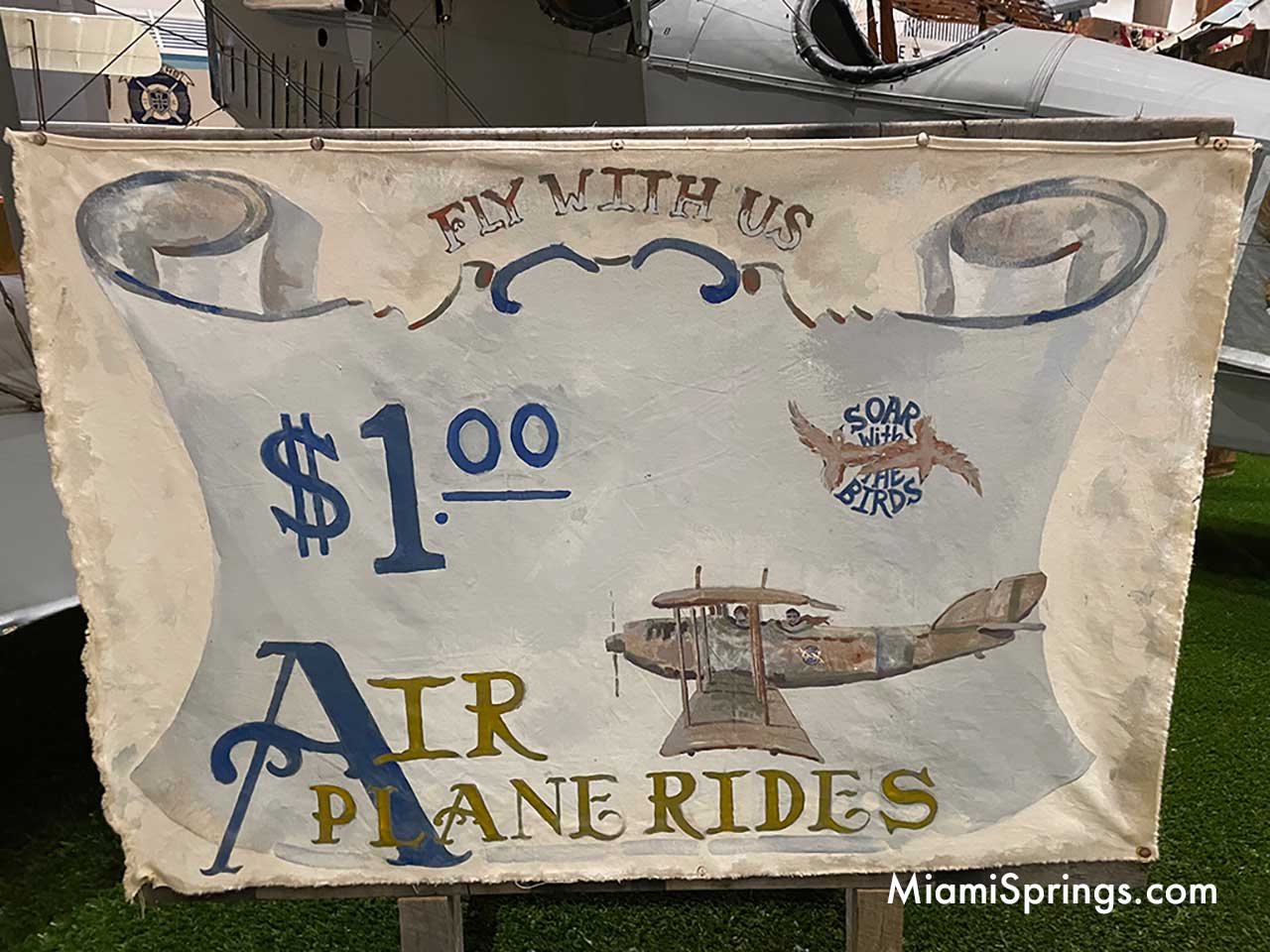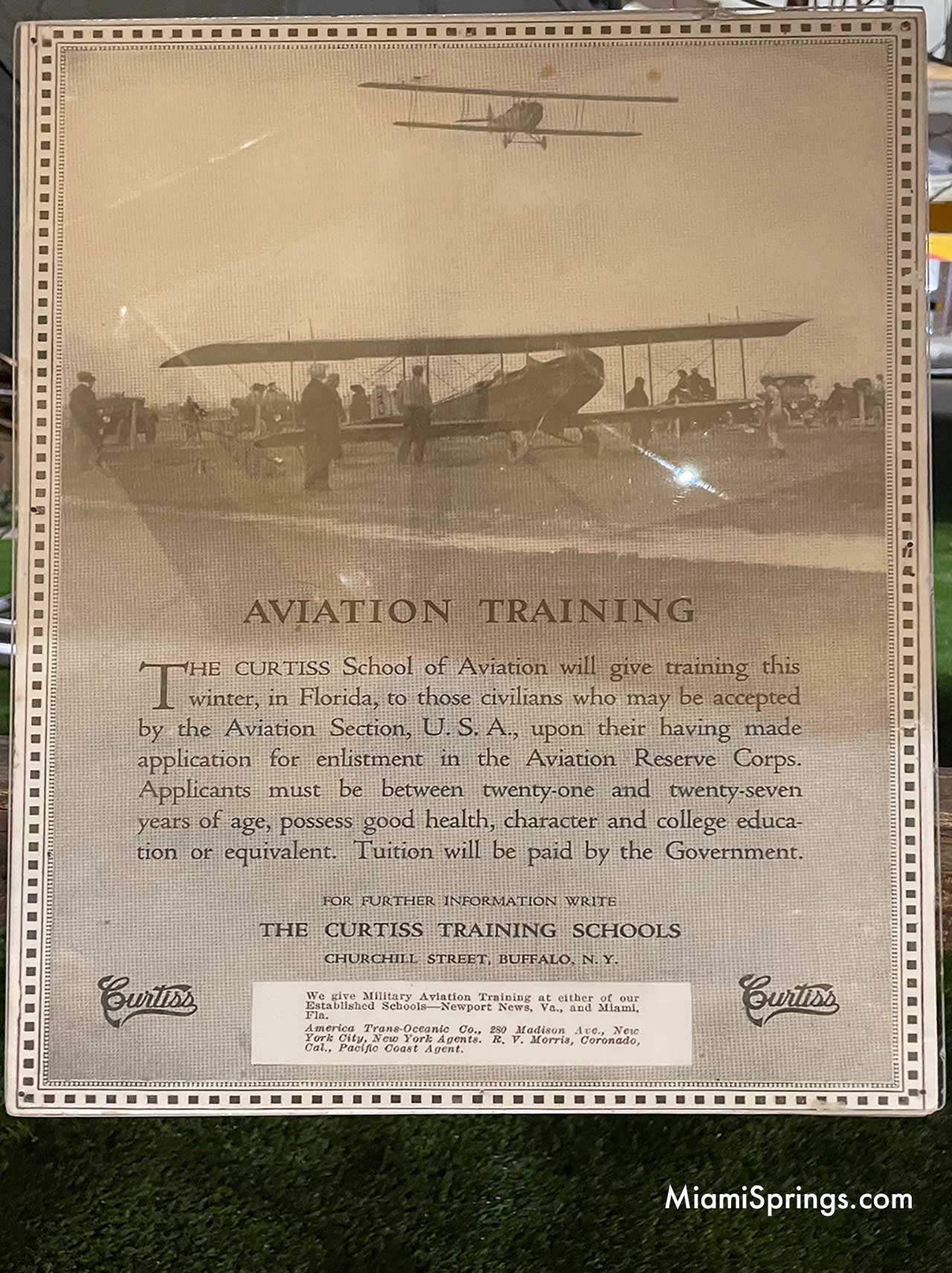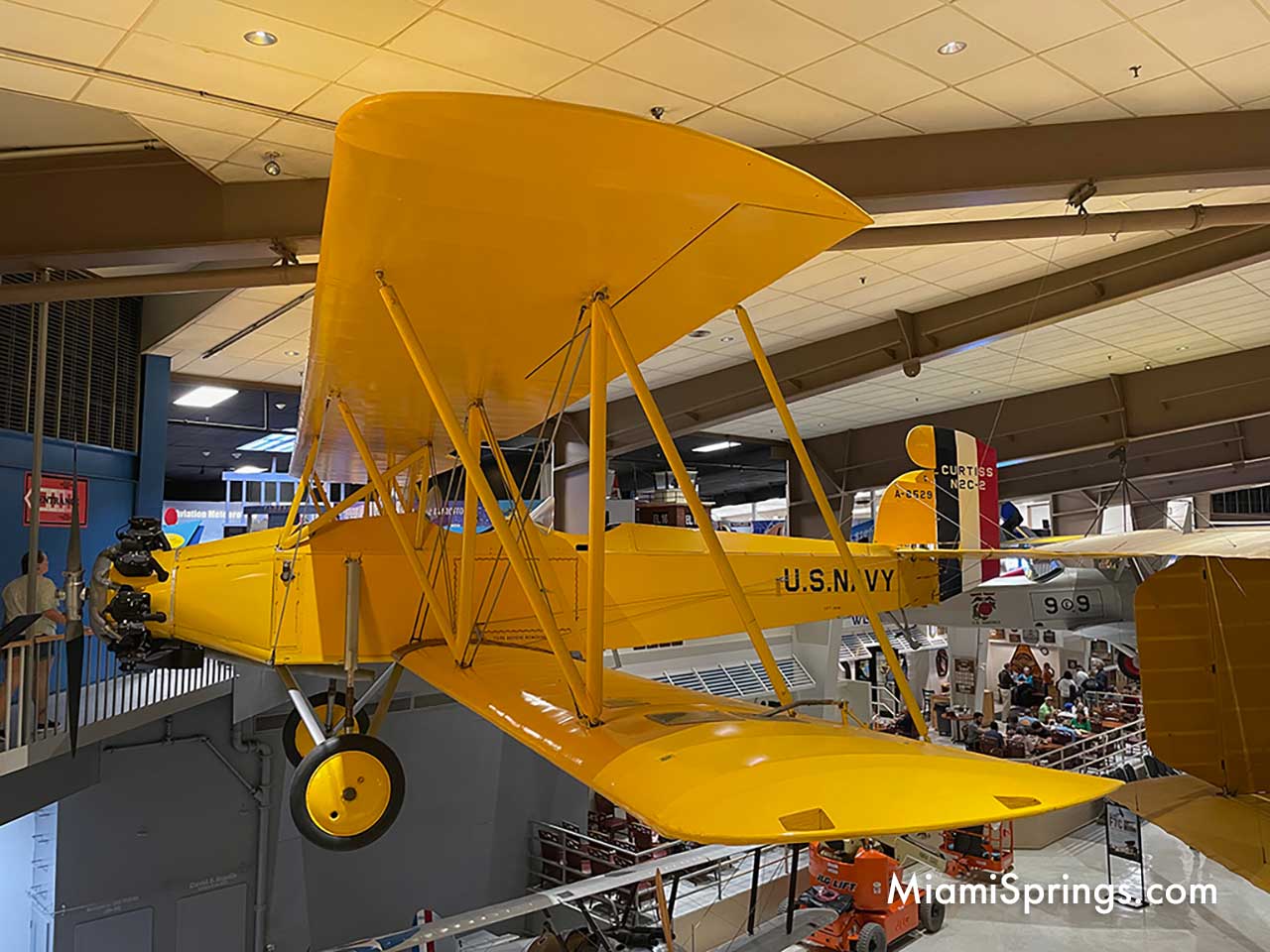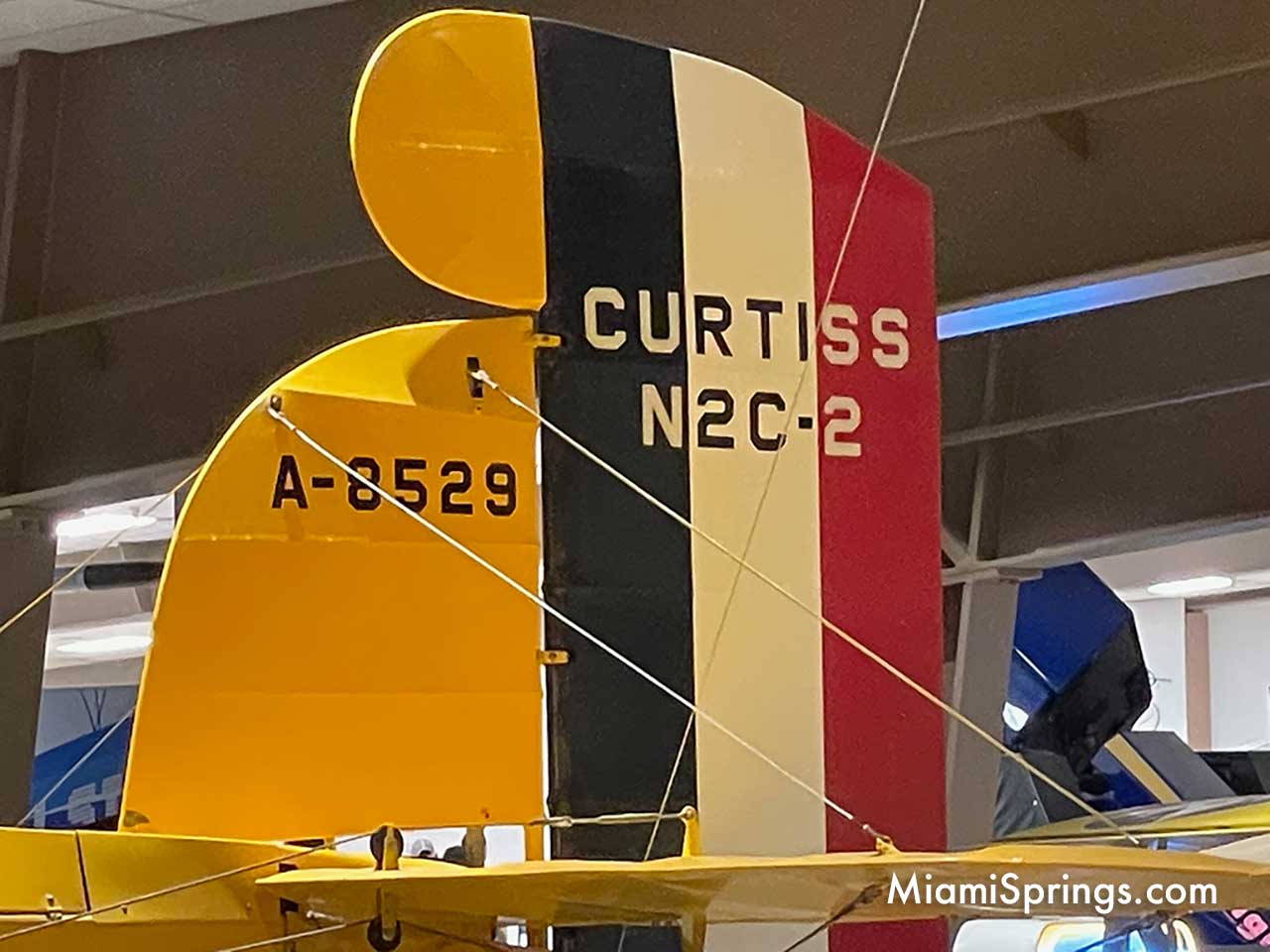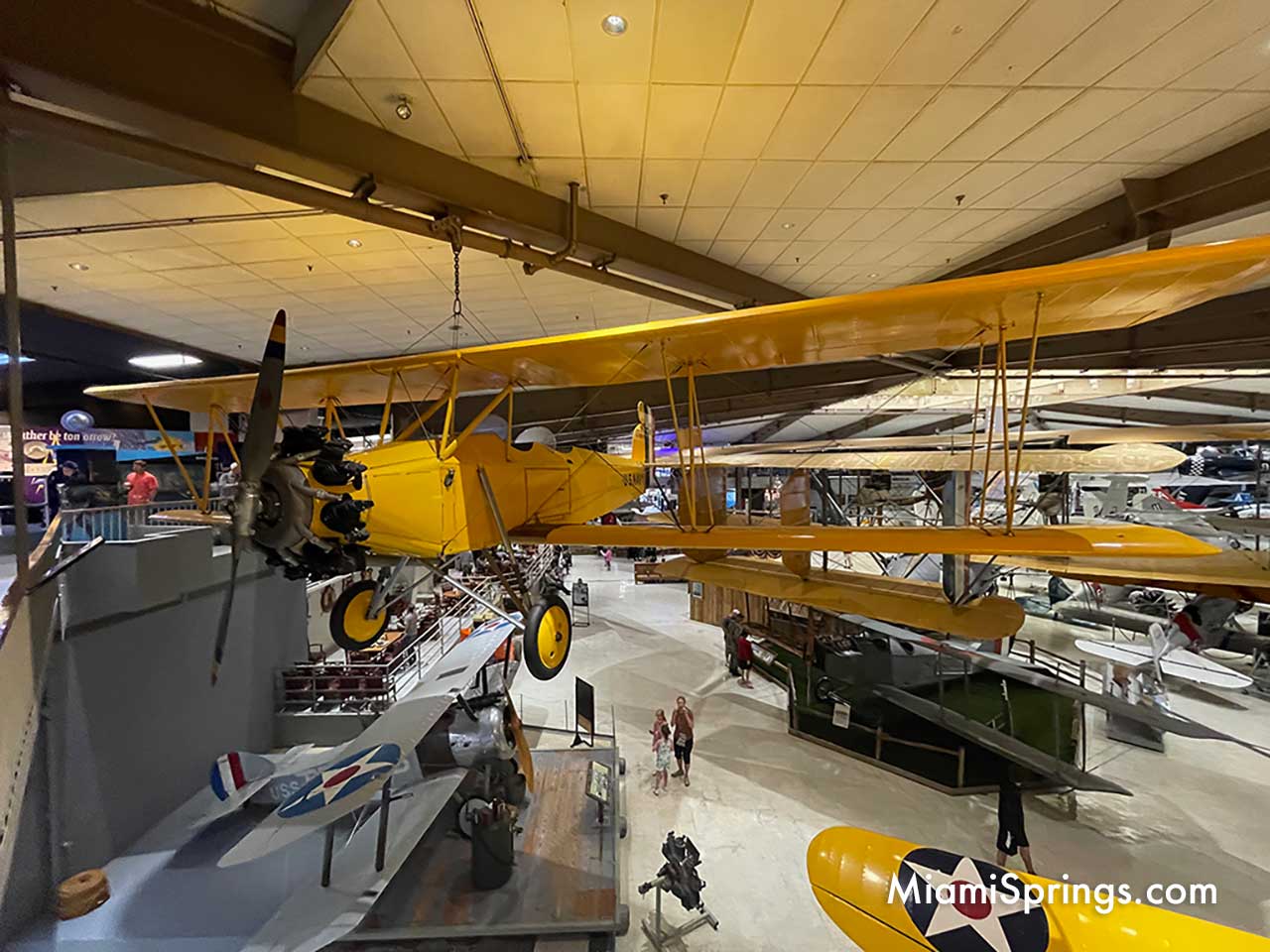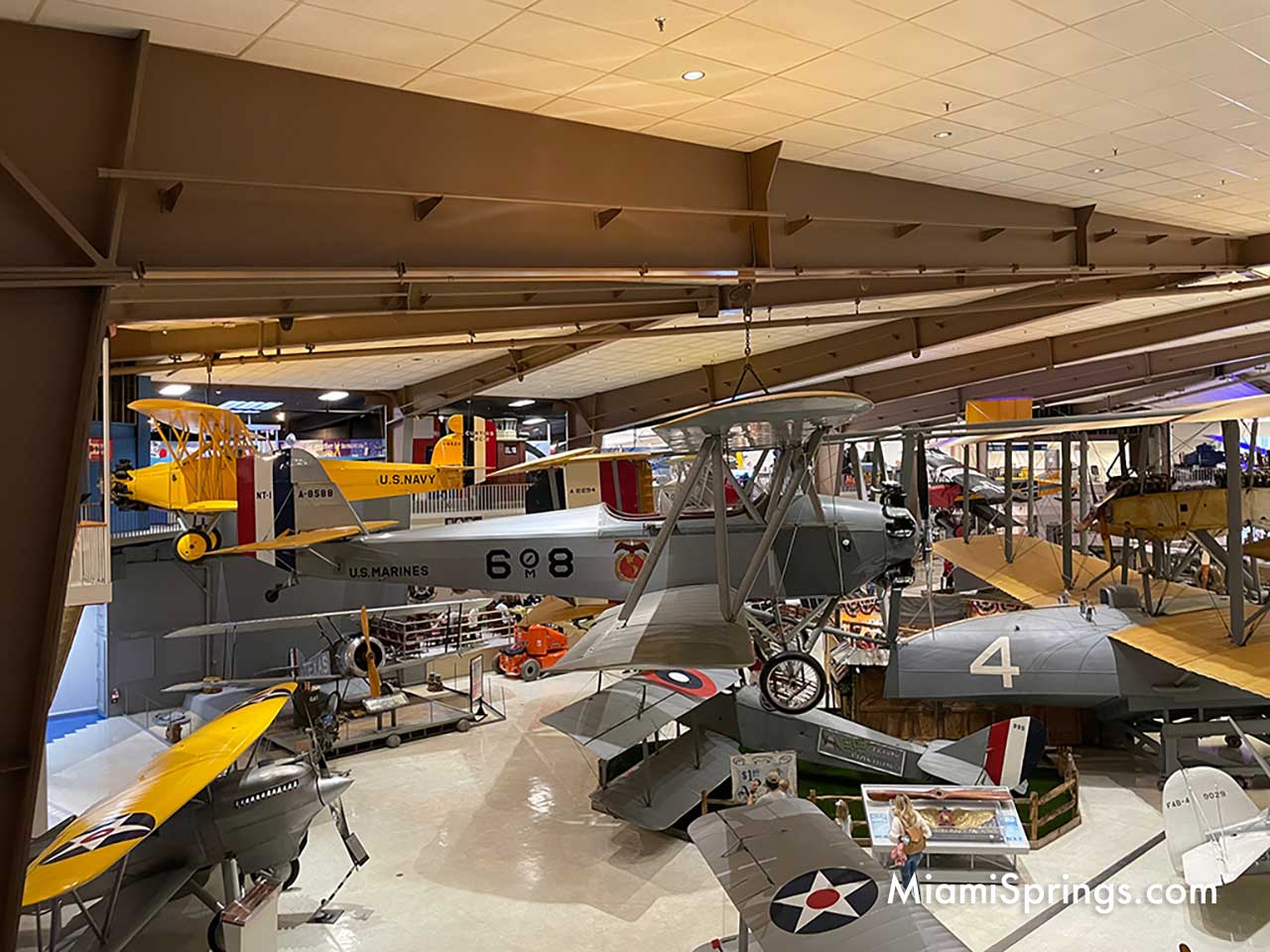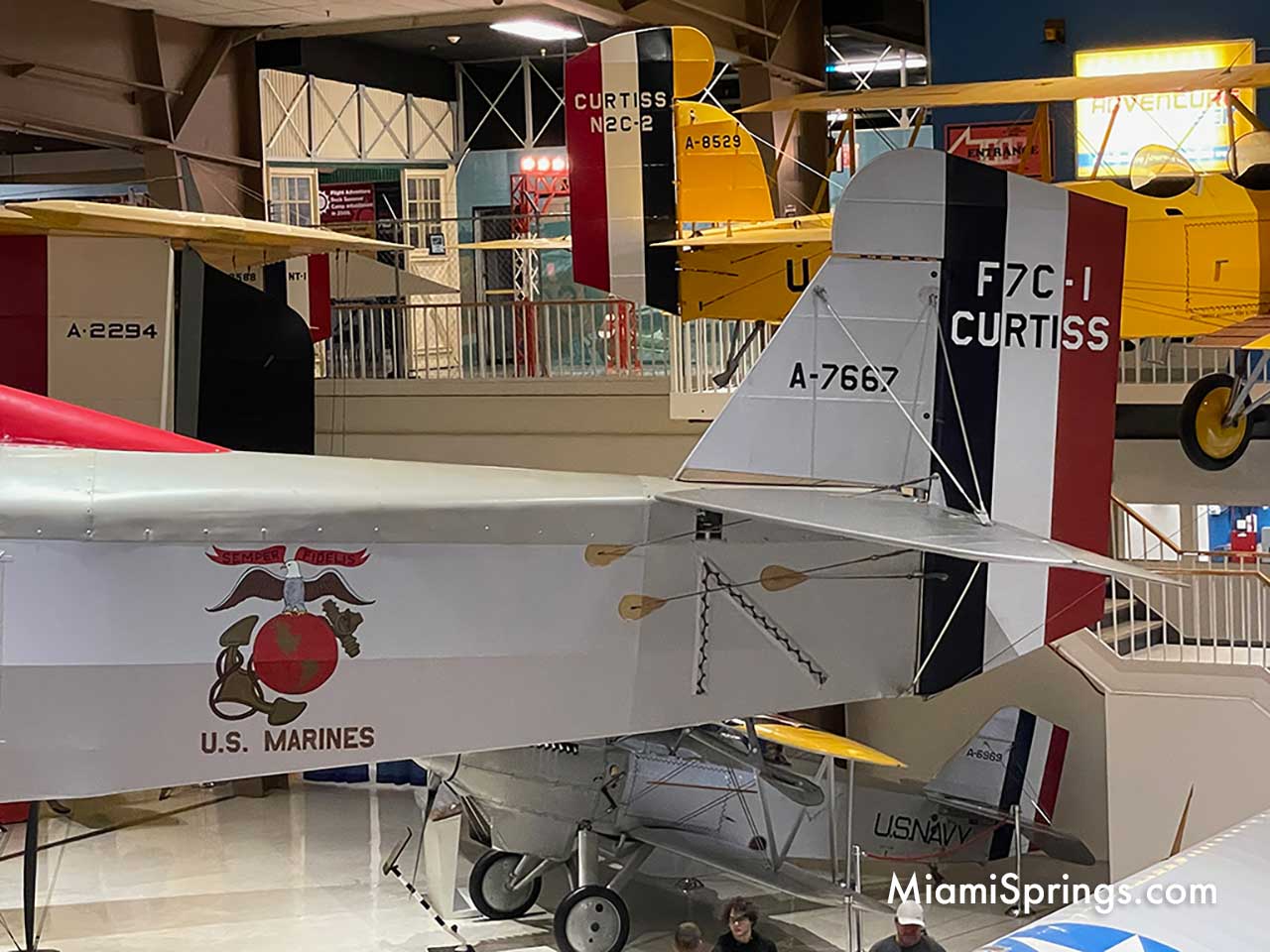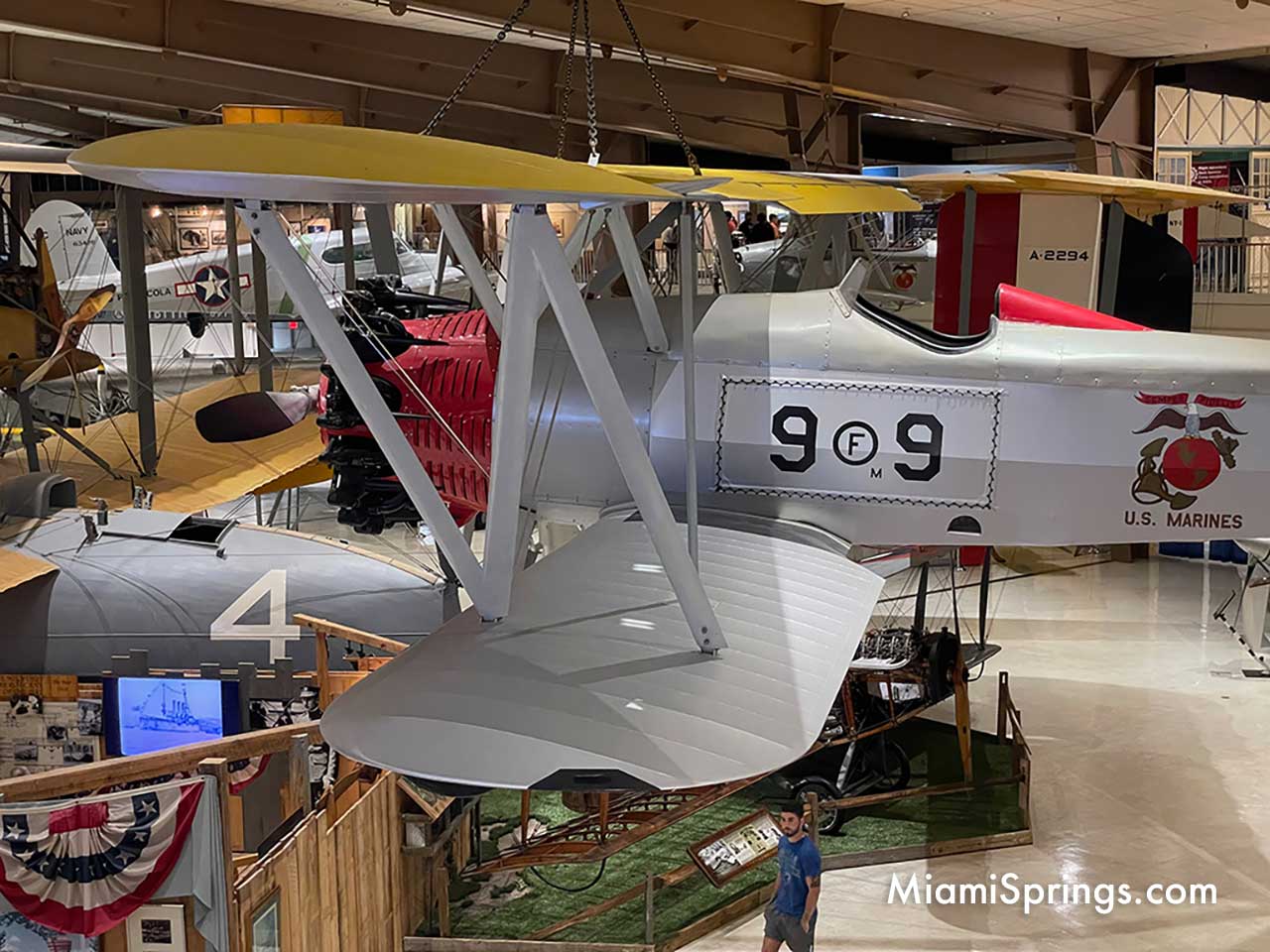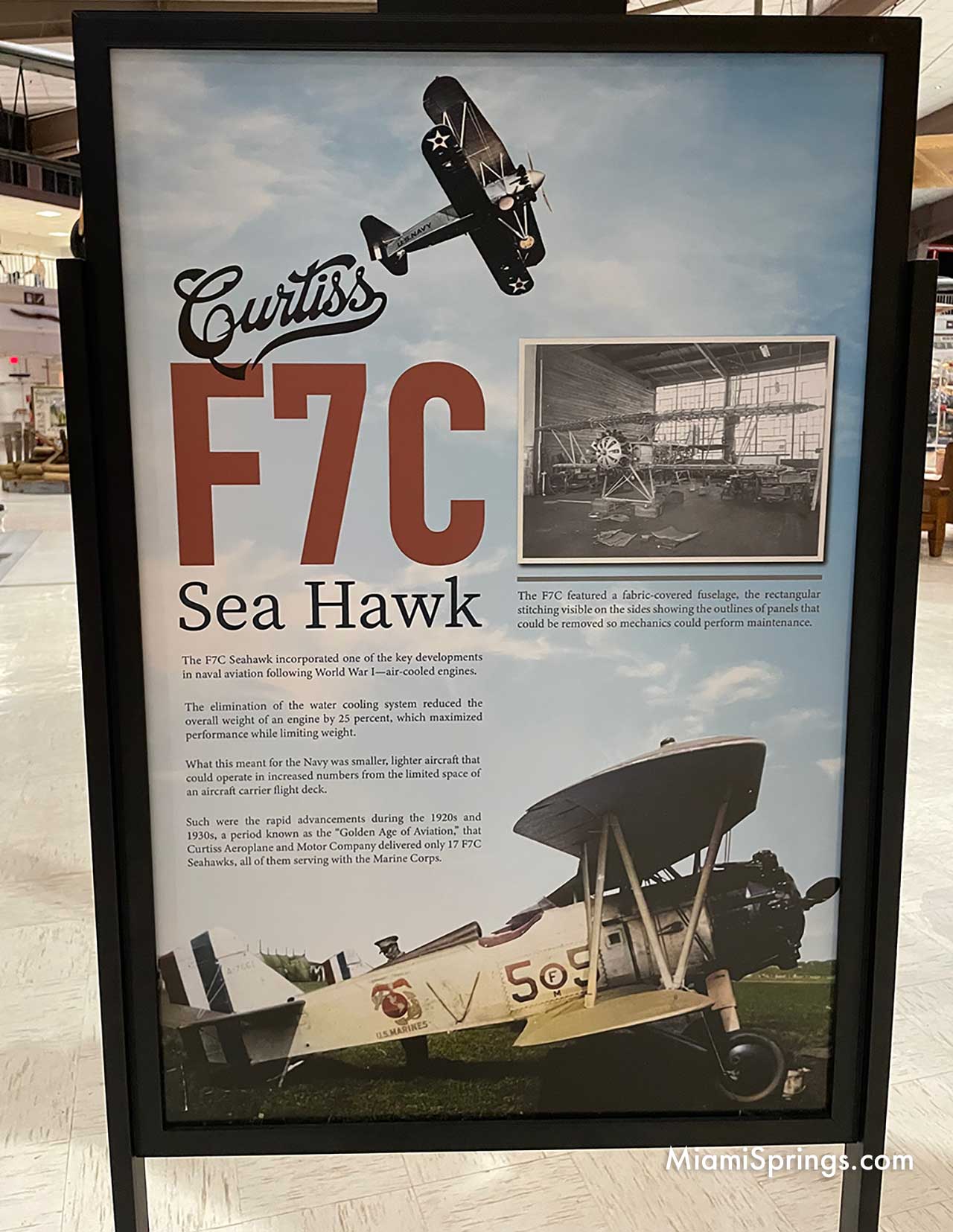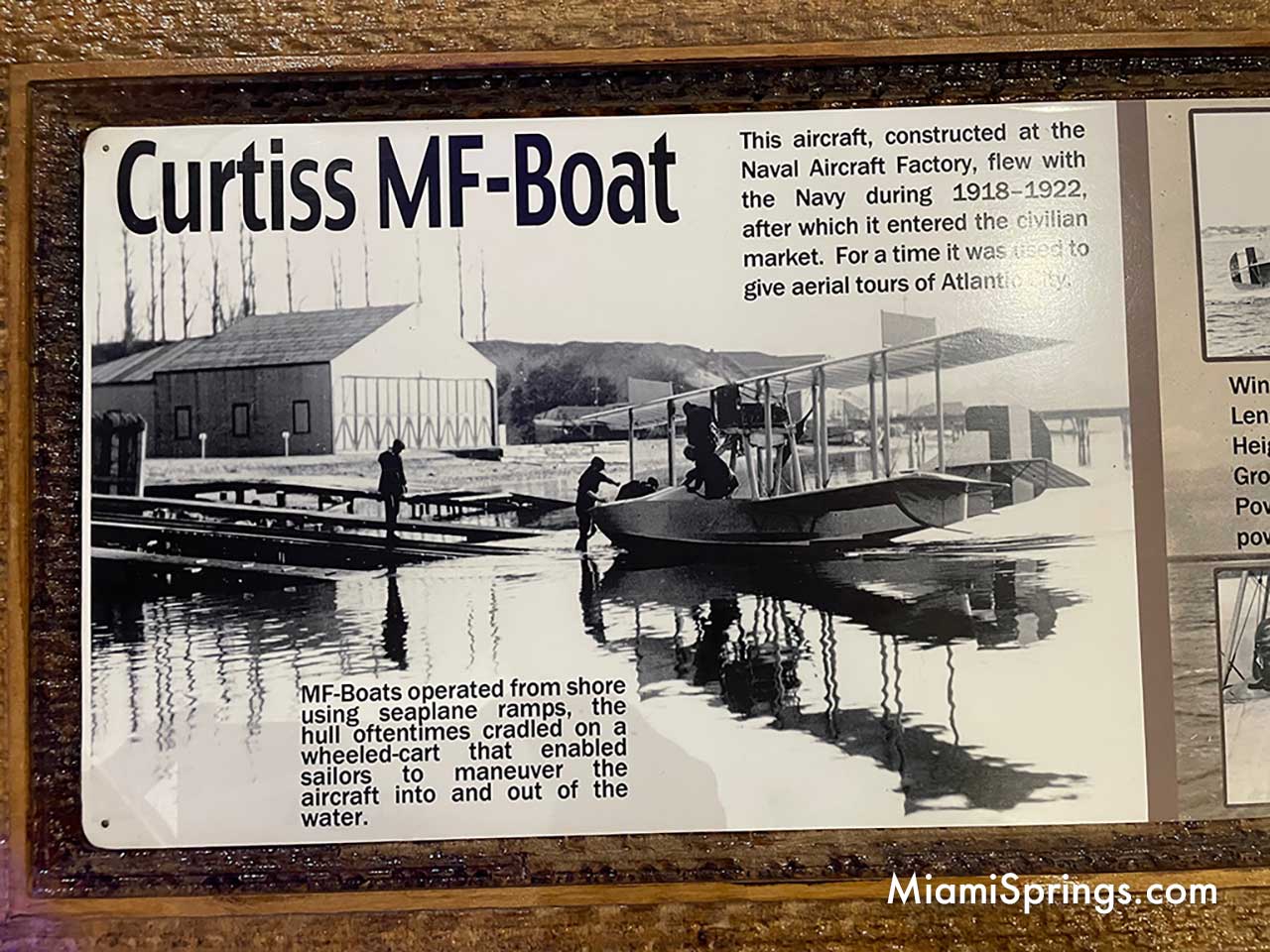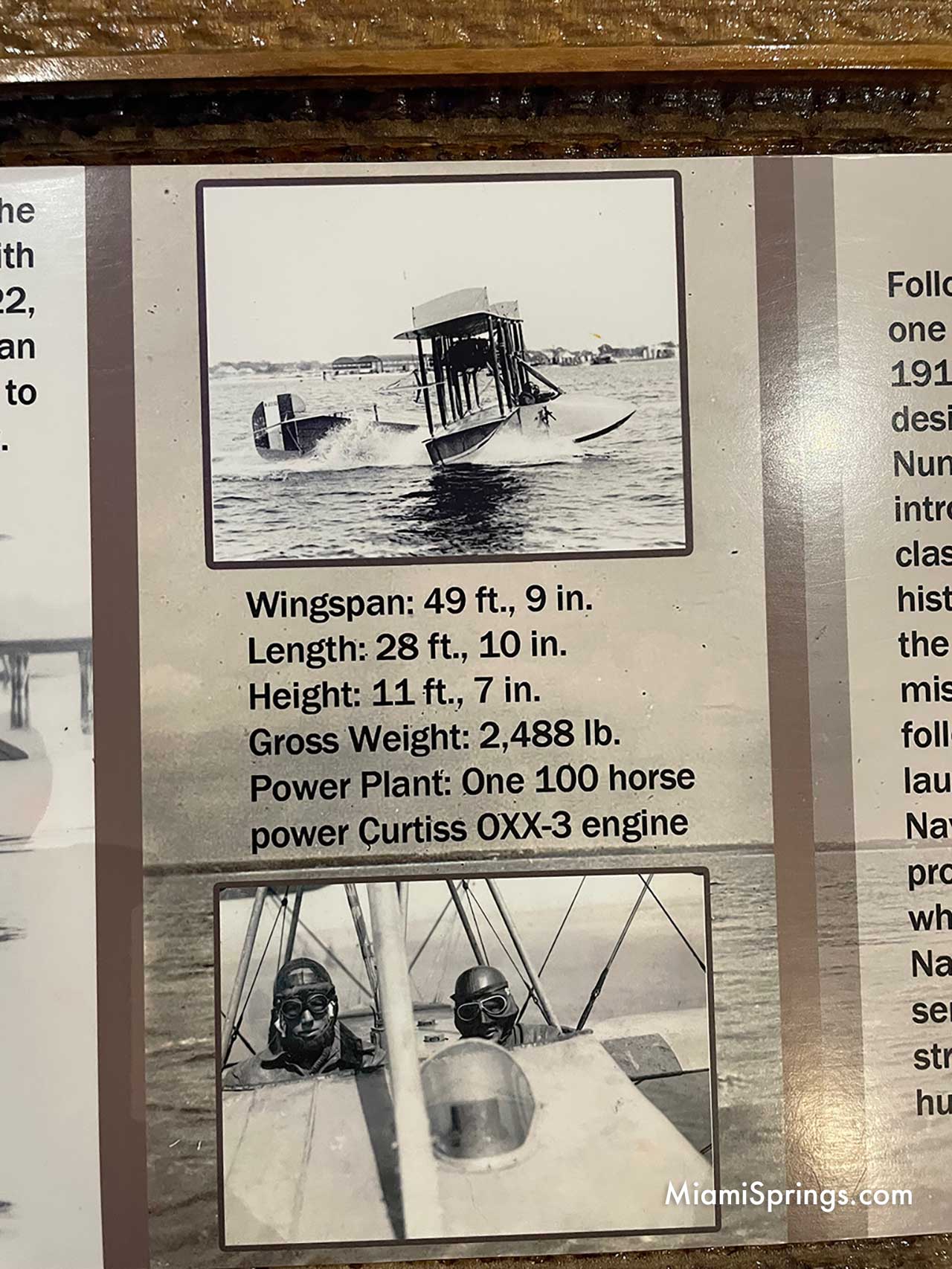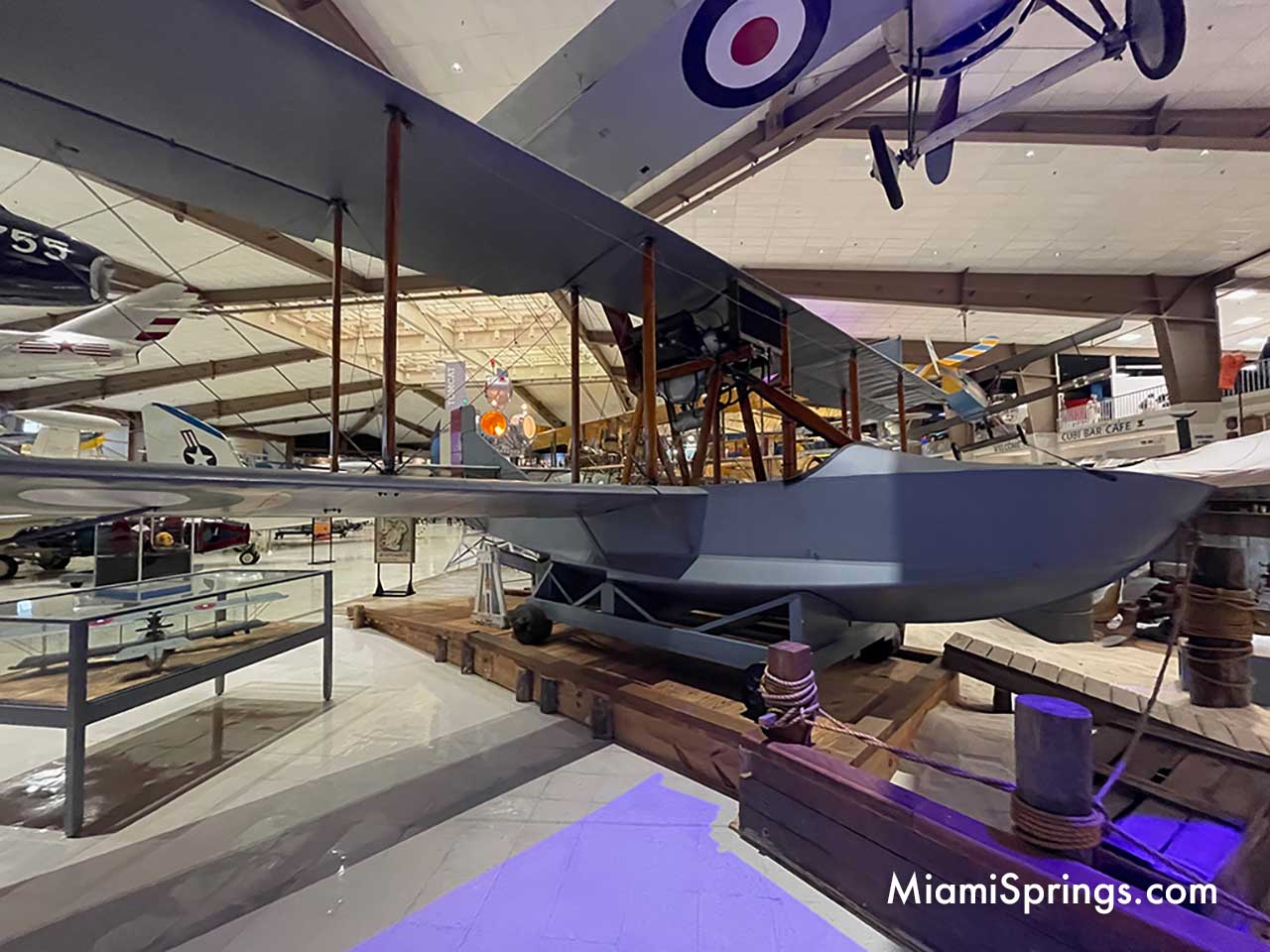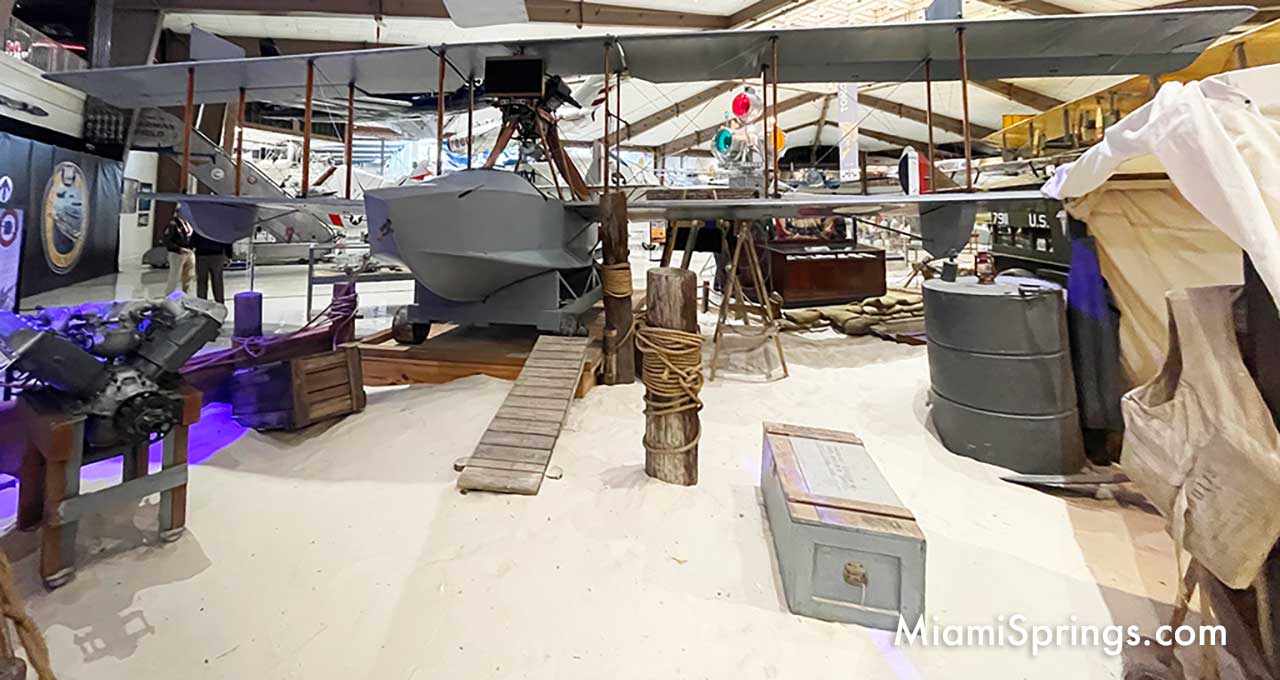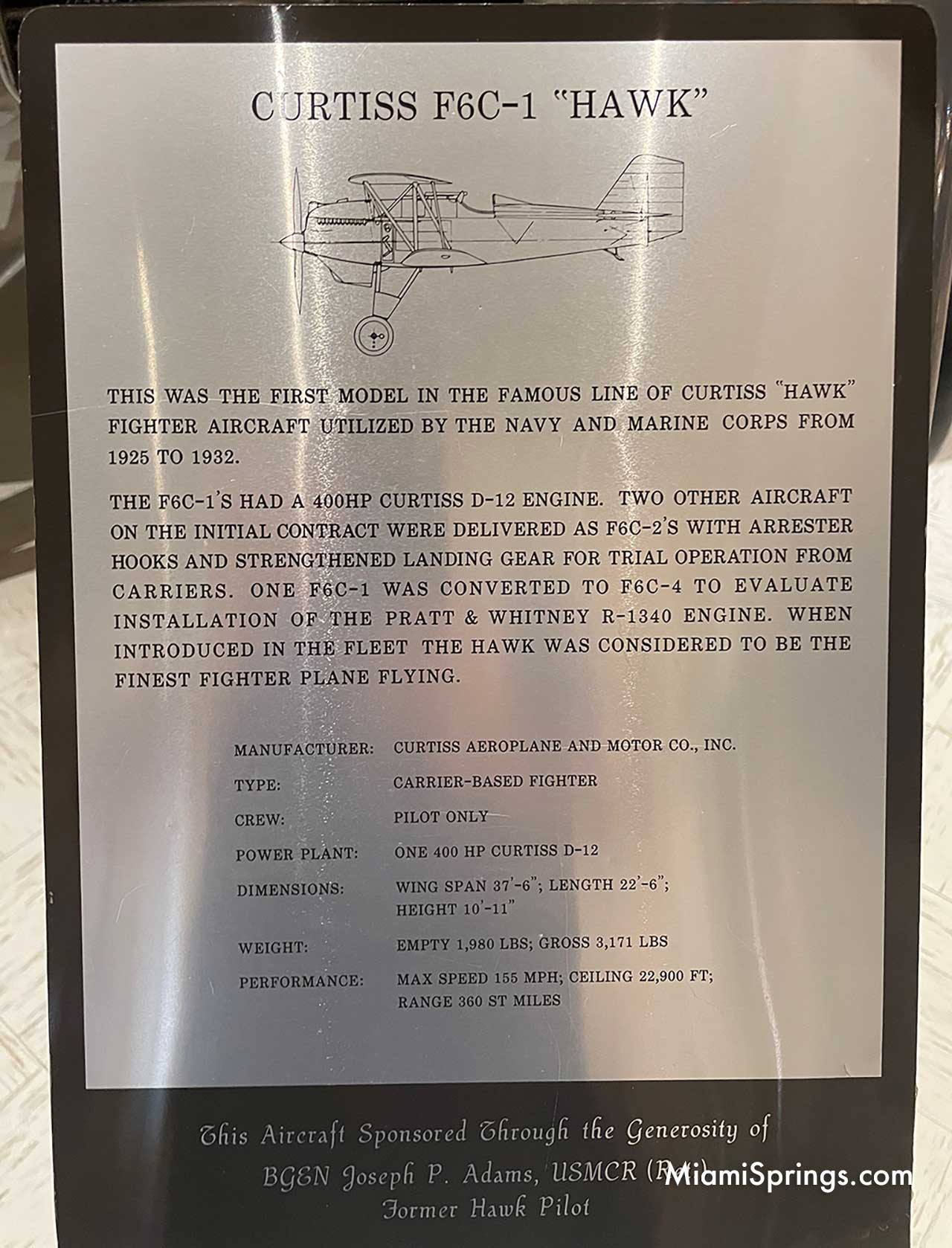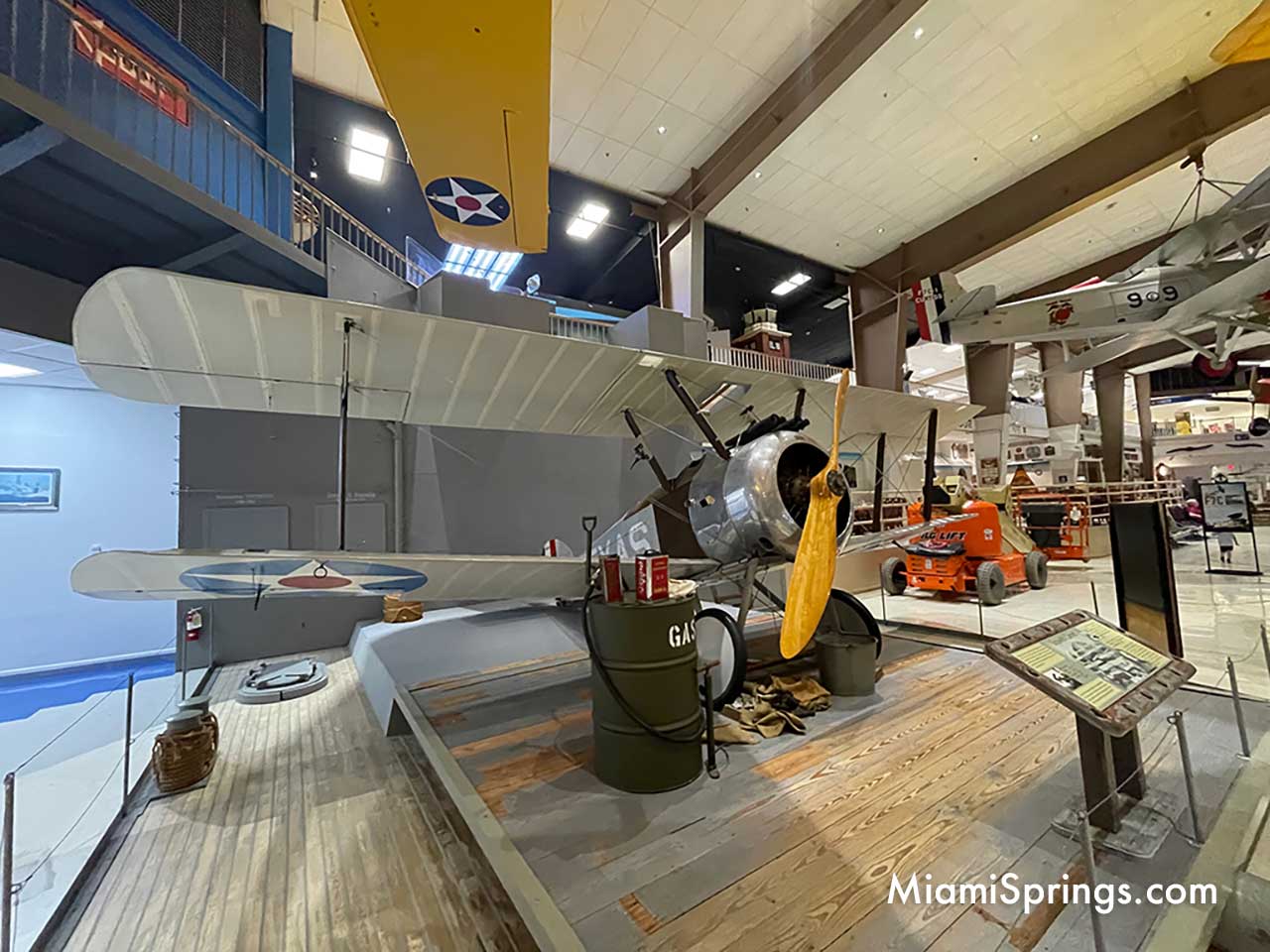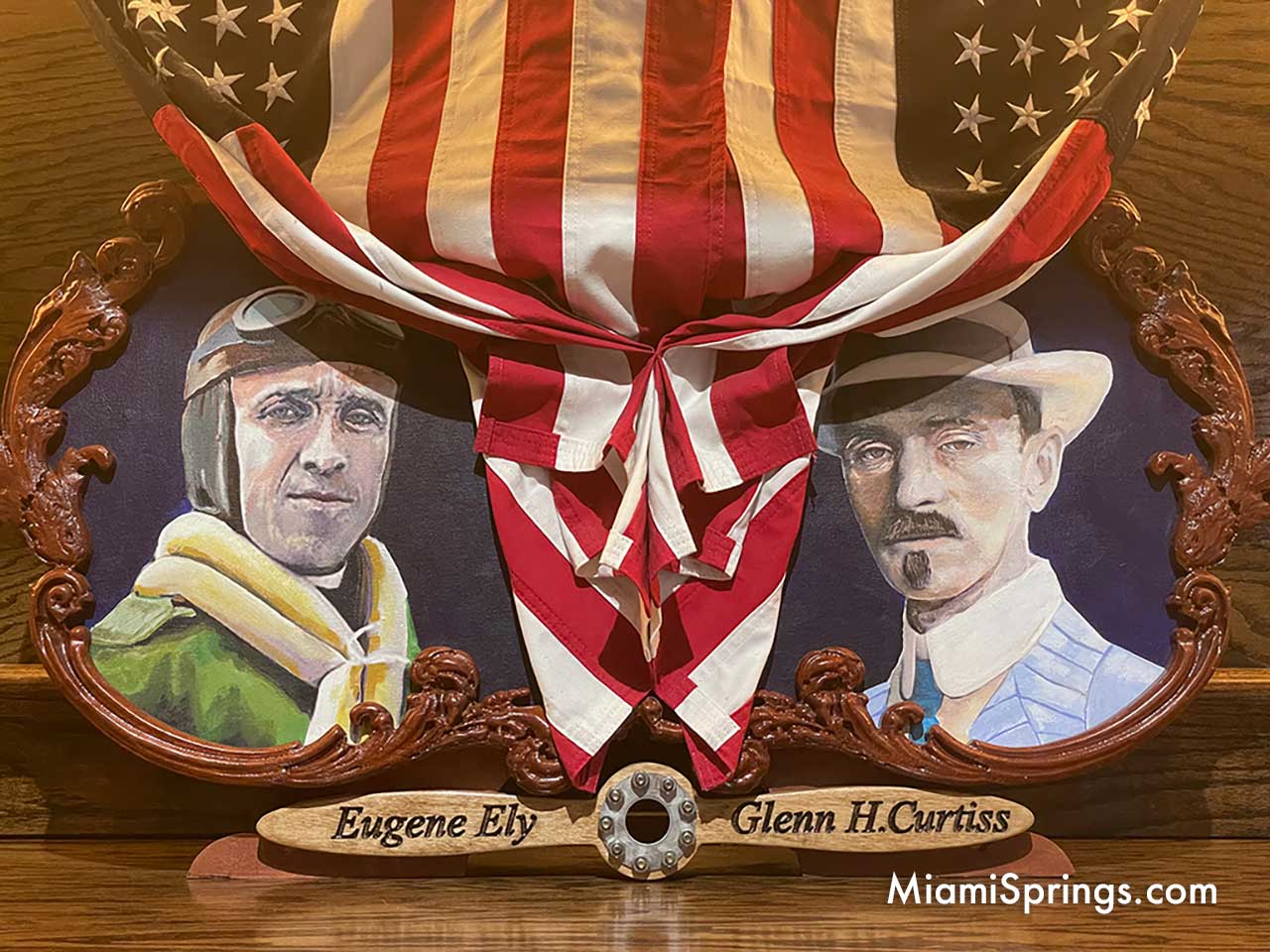Casual Springs residents know that there’s a Curtiss Parkway in the middle of Miami Springs. They know there’s a beautiful Curtiss Mansion. They might know Glenn Curtiss had something to do with the founding of Miami Springs, Hialeah, and Opa-Locka.
But did you know Glenn Curtiss is considered the father of Naval Aviation? Well, the Navy sure hasn’t forgotten.
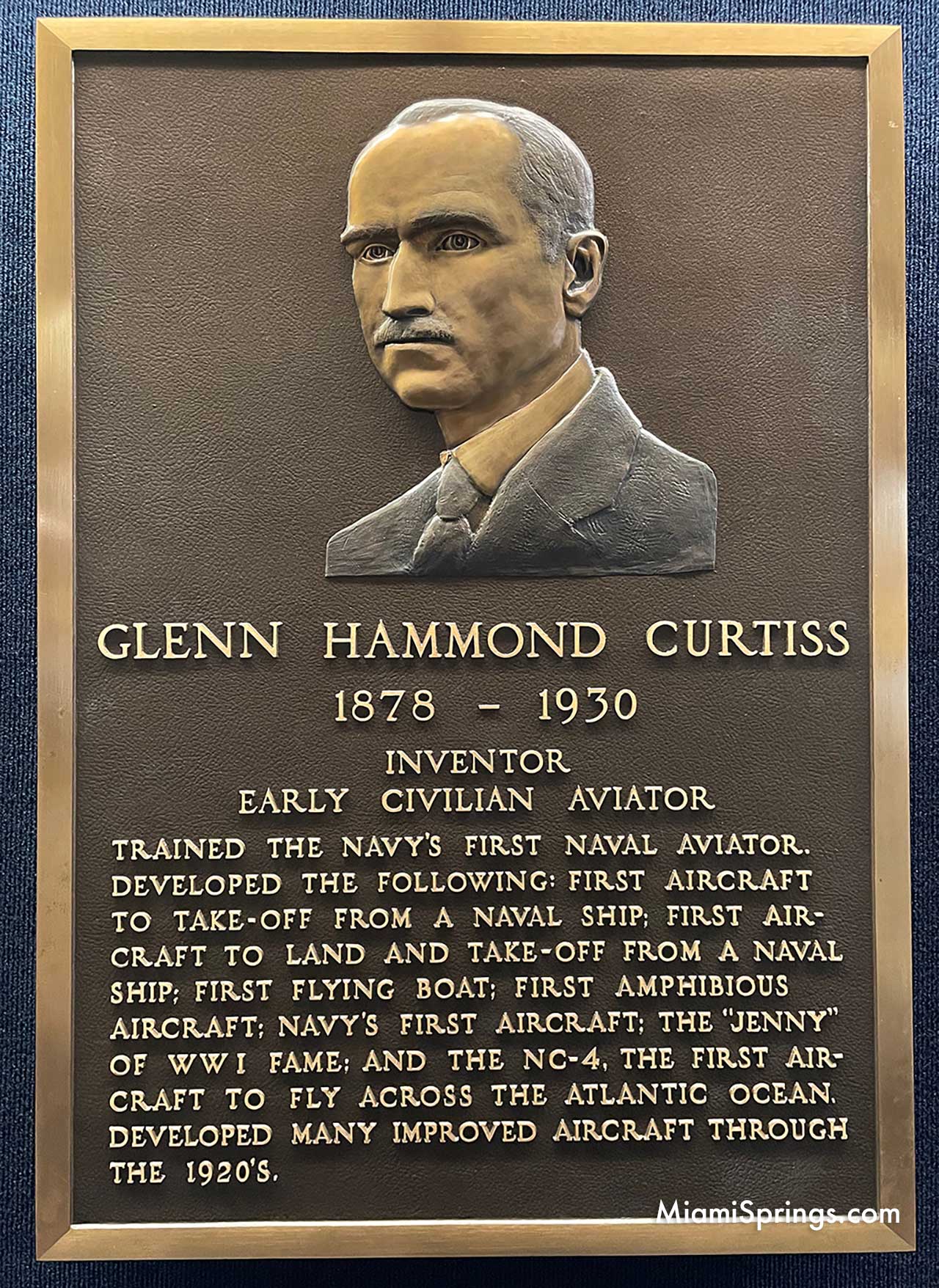
We recently had the opportunity to visit the National Naval Aviation Museum in Pensacola, Florida. If you love aviation, you’ll want to make a trip to this wonderful treasure right here in our home state.
Of course, the kids (both young and old) want to see the jets and the Blue Angels. However, you’ll want to spend some time enjoying the well preserved Curtiss aircraft throughout the museum.
Curtiss A-1 Triad
The first plane presented to visitors as they enter the museum is none other than the Curtiss A-1 Triad.

The Curtiss A-1 Triad was a seaplane designed and built by the Curtiss Aeroplane and Motor Company in the United States in 1911. It was a two-seat aircraft that featured a unique “triad” configuration, with two pontoons mounted under the wings and a third one placed under the fuselage. The Triad was intended as a versatile military aircraft that could be used for reconnaissance, bombing, and coastal defense.

The A-1 Triad was powered by a 75-horsepower Curtiss V-8 engine, which allowed it to reach a top speed of 50 miles per hour and a range of 180 miles. It had a wingspan of 44 feet and a length of 32 feet, and it weighed around 2,000 pounds when fully loaded. The Triad’s distinctive design provided it with excellent stability and maneuverability on the water, making it a popular choice for naval aviators.
The Triad was used by the US Navy from 1911 to 1914, and it saw action in the Mexican Revolution in 1914. Although it was eventually replaced by more advanced aircraft, the Triad played an important role in the development of naval aviation, paving the way for the seaplanes that would be used extensively in World War I and beyond. Today, only one Triad remains, on display at the National Naval Aviation Museum in Pensacola, Florida, as a testament to the pioneering spirit of the early days of aviation.


Curtiss NC-4: First to cross the Atlantic
As we toured the incredibly beautiful and well cared for National Naval Aviation Museum we were shocked to see the one and only Curtiss NC-4. This thing is huge. But more importantly, we were staring at the real deal. The very first aircraft to make it across the Atlantic. The legendary Curtiss NC-4 flying boat.

We had seen pictures of it and models at the Smithsonian Air and Space Museum in Washington. But for whatever reason, I had assumed that the original NC-4 had not survived to this day. You can imagine my shock and amazement to learn that we had the genuine first aircraft to fly across the Atlantic and built by the Curtiss Aeroplane and Motor Company right in front of my eyes. I was totally geeking out.

The Curtiss NC-4 was a flying boat built by the Curtiss Aeroplane and Motor Company in the early 20th century. The NC-4 was part of a series of three aircraft built for the US Navy, with the aim of demonstrating the feasibility of long-distance flight over water.
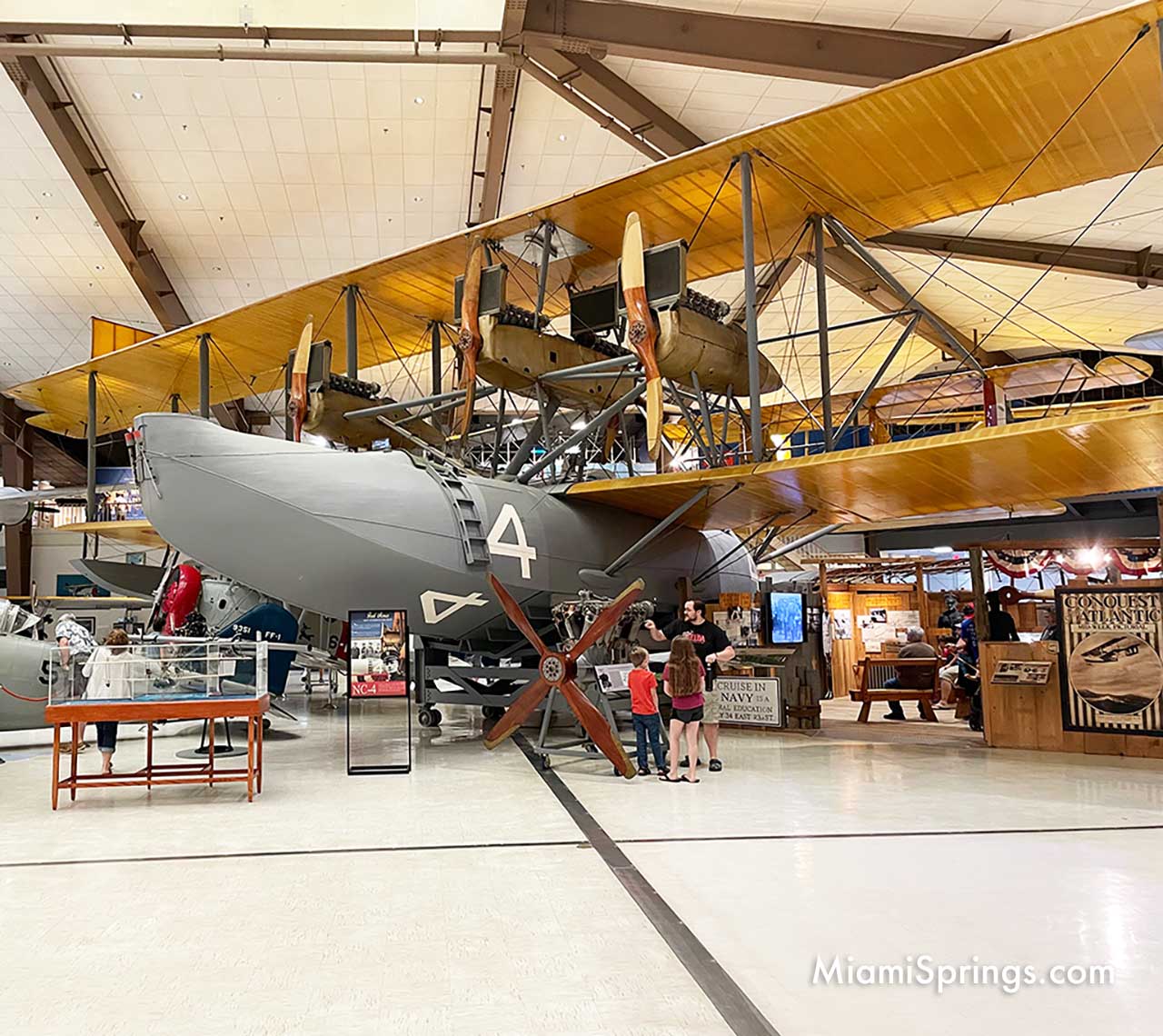
The NC-4 was designed to fly across the Atlantic Ocean from the United States to Europe. The US Navy believed that such a flight would be a major technological achievement and would demonstrate the power and capabilities of the US military.

The NC-4 was built in 1918, with a wingspan of 126 feet and a length of 68 feet. It was powered by four engines, and had a maximum speed of 85 miles per hour. The aircraft was also equipped with radio and navigation equipment, which was state-of-the-art at the time.
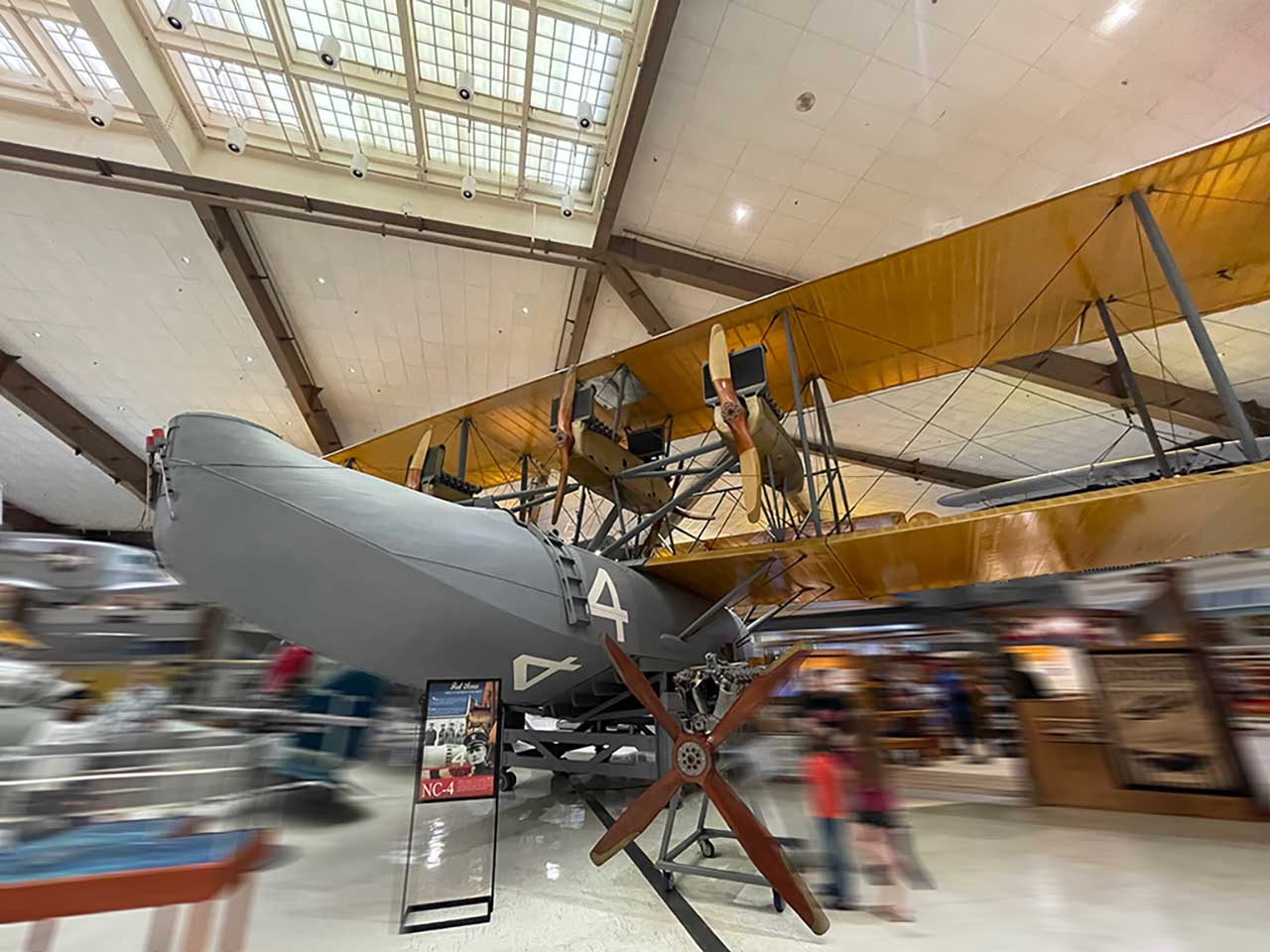
In May 1919, the NC-4, along with two other aircraft, set out from New York on a transatlantic flight to Europe. The flight was beset with difficulties, including bad weather, engine problems, and navigation issues. One of the other aircraft, the NC-1, had to be abandoned and sunk in the Atlantic due to engine failure.

The NC-4 and the remaining aircraft, the NC-3, continued on, and eventually arrived in Lisbon, Portugal, on May 27, 1919, after stopping at several locations along the way. The NC-4 was the first aircraft to complete a transatlantic flight, although it did so in stages, rather than in a single non-stop flight.
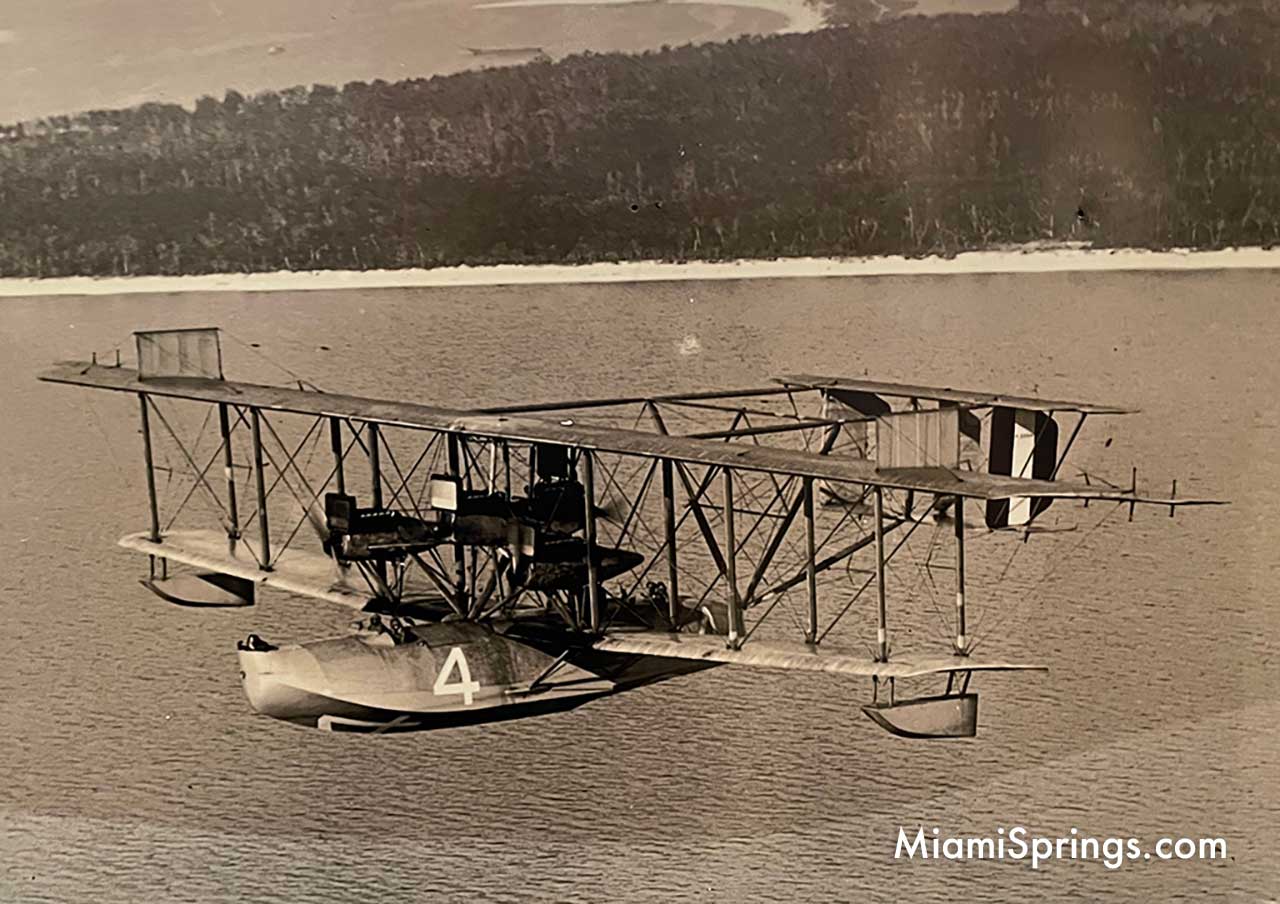
The NC-4 continued to be used by the US Navy for several years after its historic flight. It was eventually retired from service in 1924 and was donated to the Smithsonian Institution. The plane is now on loan from the Smithsonian Institution to the National Naval Aviation Museum in Pensacola.
Crossing the Atlantic
May 8, 1919: The three flying boats departed Naval Air Station Rockaway, New York, at 10:30 a.m. Eastern Standard Time (EST).
May 10, 1919: The NC-4, piloted by Lieutenant Commander Albert C. Read, made an unscheduled stop in Chatham, Massachusetts, due to a faulty oil gauge. The NC-1 was forced to land in the open sea due to a fuel pump failure, and its crew was rescued by the Greek freighter SS Ionia.
May 15, 1919: The NC-4 and NC-3 arrived at the Trepassey Bay, Newfoundland, Canada, at 7:45 a.m. EST, where they waited for better weather conditions before continuing their journey.
May 16, 1919: The NC-4 and NC-3 departed Trepassey Bay at 5:00 a.m. EST.
May 16-17, 1919: The NC-4 and NC-3 made a rest stop in the Horta Harbor, Fayal Island, Azores, arriving on May 17 at 1:30 p.m. local time.
May 20, 1919: The NC-4 and NC-3 departed the Azores at 6:30 a.m. local time.
May 27, 1919: The NC-4, piloted by Read, arrived in Lisbon, Portugal, at 10:15 a.m. local time, completing the first aerial crossing of the Atlantic from the U.S. to Europe.
Overall, the journey took 19 days, with the flying boats covering a distance of over 3,000 miles (4,800 km) and making several stops along the way. The NC-4’s successful completion of the transatlantic flight demonstrated the potential of long-distance flight over water and paved the way for future aviation milestones.
Below you’ll find what appears to be a a program for a dinner in honour of the Commanders and Crew of the NC-4 by the American Flying Club in celebration of the first transatlantic flight. You’ll notice the two dates: 1919 and 1492. The first date recognizes the first transatlantic flight. The second date recognizes Columbus’ voyage from the Old World to the New World.
Curtiss JN-4 Jenny
The Curtiss JN-4, commonly known as the Curtiss Jenny, was an aircraft produced by the Curtiss Aeroplane and Motor Company in the early 20th century. It was first produced in 1915 and quickly became one of the most popular and influential aircraft of the era.
The Curtiss Jenny was used for a wide range of purposes, including military training, reconnaissance, and civilian aviation. It was used extensively during World War I by the United States Army and Navy as a training aircraft, and it played a crucial role in preparing pilots for combat.
After the war, many surplus Curtiss Jennys were sold to civilians, which helped to popularize aviation and played a significant role in the growth of the aviation industry in the United States. Many pilots who had flown Curtiss Jennys during their military service went on to become commercial pilots or barnstormers, performing stunts and giving rides to the public.
The Curtiss Jenny’s popularity and versatility helped to establish the United States as a major player in the aviation industry. Its availability and affordability made it accessible to a wide range of people, including hobbyists and entrepreneurs who used it for everything from crop dusting to mail delivery.
In addition to its impact on civilian aviation, the Curtiss Jenny also played a role in the development of the United States military. Its use as a training aircraft helped to build a strong cadre of skilled pilots who would go on to serve in future conflicts.
Overall, the Curtiss Jenny was a highly influential aircraft that helped to shape the course of aviation history in the United States. Its impact can still be felt today, with many aviation enthusiasts and collectors seeking out surviving examples of this iconic aircraft.

Today, there’s a Curtiss Jenny weather vane atop the Gazebo on the Circle. Hopefully one day, we can add a life-size replica of a Jenny to place on display on the Circle or on the Curtiss Mansion.
Curtiss N2C-2 “Fledgling”
The Curtiss N2C-2 was a biplane trainer aircraft produced by the Curtiss Aeroplane and Motor Company in the 1930s. It was designed as a successor to the earlier N2C-1, which had been introduced in 1928.
The N2C-2 was a two-seat trainer aircraft with an open cockpit and a fabric-covered steel-tube fuselage. It was powered by a 160 hp Wright Whirlwind radial engine and had a top speed of around 105 mph. The aircraft was also equipped with a fixed landing gear and tail skid.
The N2C-2 was primarily used by the United States Navy for basic flight training, although it was also used for intermediate and advanced training in some cases. It proved to be a reliable and popular aircraft, with more than 200 examples produced.
In addition to its use by the Navy, the N2C-2 was also used by several civilian aviation schools and flying clubs. It played a role in training many of the pilots who would go on to serve in World War II.
The N2C-2 remained in service with the Navy until the early 1940s, when it was gradually replaced by newer and more advanced trainer aircraft. However, many N2C-2s remained in civilian use for many years after that, and some are still flown today by private collectors and aviation enthusiasts.
Overall, the Curtiss N2C-2 was a reliable and versatile aircraft that played an important role in the history of aviation. Its use by the Navy and civilian aviation schools helped to train many of the pilots who would go on to serve in World War II and beyond, and it remains a beloved and iconic aircraft to this day.
Curtiss F7C “Seahawk”
The Curtiss F7C Seahawk was a two-seat biplane fighter aircraft produced by the Curtiss Aeroplane and Motor Company in the 1920s. It was primarily designed for use by the United States Navy and was intended to serve as a carrier-based fighter.
The F7C Seahawk was a development of the earlier Curtiss F6C Hawk, which had been introduced in 1925. The F7C featured a redesigned fuselage and wings, as well as a more powerful engine. It was powered by a 450 hp Pratt & Whitney air cooled radial engine and had a top speed of around 151 mph.
The F7C Seahawk was equipped with two .30 caliber machine guns and could also carry a variety of bombs and rockets. It was used primarily for scouting and reconnaissance missions, as well as for providing air cover for naval ships.
The F7C Seahawk was first introduced in 1927 and remained in service with the Navy until the early 1930s, when it was gradually phased out in favor of newer and more advanced fighter aircraft. However, some F7C Seahawks remained in use as trainers and utility aircraft for many years.
Despite its relatively short service life, the Curtiss F7C Seahawk played an important role in the development of carrier-based fighter aircraft. Its design and capabilities helped to pave the way for future developments in naval aviation, and it helped to establish Curtiss as a leading manufacturer of military aircraft during the interwar period.
Today, several examples of the F7C Seahawk can be found in museums and private collections around the world, serving as a testament to the aircraft’s historical significance and enduring popularity.
Curtiss MF-Boat
The Curtiss MF-Boat was a type of flying boat produced by the Curtiss Aeroplane and Motor Company from 1918 – 1922. It was designed for use by the United States Navy and was intended to serve as a patrol aircraft, capable of operating from both land and sea.
The MF-Boat was a development of an earlier Curtiss design, the C-2 flying boat. The MF-Boat featured a redesigned hull and larger wingspan, as well as a more powerful engine. It was powered by a 100 hp OXX-3 engine and had a top speed of around 95 mph.
The MF-Boat was equipped with two .30 caliber machine guns and could also carry bombs and depth charges for use against submarines. It was used primarily for patrolling coastal waters and for providing reconnaissance and surveillance support for naval operations.
The MF-Boat was first introduced in 1918 and remained in service with the Navy for several years, being gradually replaced by newer and more advanced aircraft in the late 1920s and early 1930s. However, some MF-Boats remained in use as utility aircraft and trainers for many years.
Despite its relatively short service life, the Curtiss MF-Boat played an important role in the development of naval aviation. Its design and capabilities helped to establish the viability of flying boats for naval operations, and it helped to cement Curtiss’ reputation as a leading manufacturer of military aircraft during the interwar period.
Today, examples of the MF-Boat can be found in museums and private collections around the world, serving as a reminder of the aircraft’s historical significance and enduring popularity.
Curtiss F6C-1 “Hawk”
The Curtiss F6C-1 Hawk was a carrier-based biplane fighter aircraft produced by the Curtiss Aeroplane and Motor Company in the 1920s. It was a development of an earlier Curtiss design, the P-1 Hawk, and was primarily used by the United States Navy.
The F6C-1 Hawk was powered by a 440 hp Curtiss V-1150 engine and had a top speed of around 164 mph. It was armed with two .30 caliber machine guns and could also carry up to 200 pounds of bombs or other ordnance.
The F6C-1 Hawk first entered service with the Navy in 1927 and was primarily used for carrier-based operations, including providing air defense for naval task forces and conducting reconnaissance and surveillance missions. The aircraft’s performance and capabilities made it a popular choice among Navy pilots, and it remained in service for several years.
In addition to its service with the Navy, the F6C-1 Hawk was also used by several foreign air forces, including those of China and Argentina. It was widely regarded as one of the most advanced fighter aircraft of its time, and its success helped to cement Curtiss’ reputation as a leading manufacturer of military aircraft.
Despite its relatively short service life, the Curtiss F6C-1 Hawk played an important role in the development of carrier-based aircraft and naval aviation more broadly. Its advanced design and capabilities helped to establish the viability of fighter aircraft for carrier-based operations, and its success paved the way for the development of other advanced military aircraft in the years that followed. Today, examples of the F6C-1 Hawk can be found in museums and private collections around the world, serving as a testament to the aircraft’s historical significance and enduring popularity.
Curtiss Liberty V-12 Engine
The Curtiss Liberty V12 engine was a water-cooled aircraft engine that was widely used during World War I and the interwar period. It was designed and produced by the Curtiss Aeroplane and Motor Company, which was founded by aviation pioneer Glenn Curtiss.


The Liberty engine was designed as a response to the need for a more powerful and reliable aircraft engine during World War I. It featured 12 cylinders arranged in a V-shape, with each cylinder having a displacement of 1.6 liters. The engine was capable of producing up to 400 horsepower.

The Liberty engine quickly became one of the most important aircraft engines of its time, and was used by many of the major Allied powers during World War I. It was used primarily in American-built aircraft, but was also used in British and French aircraft as well.

After the end of World War I, the Liberty engine continued to be produced for use in both military and civilian aircraft. It was widely regarded as one of the most reliable and versatile aircraft engines of its time, and was used in a wide range of aircraft, including bombers, transport planes, and even early passenger airliners.
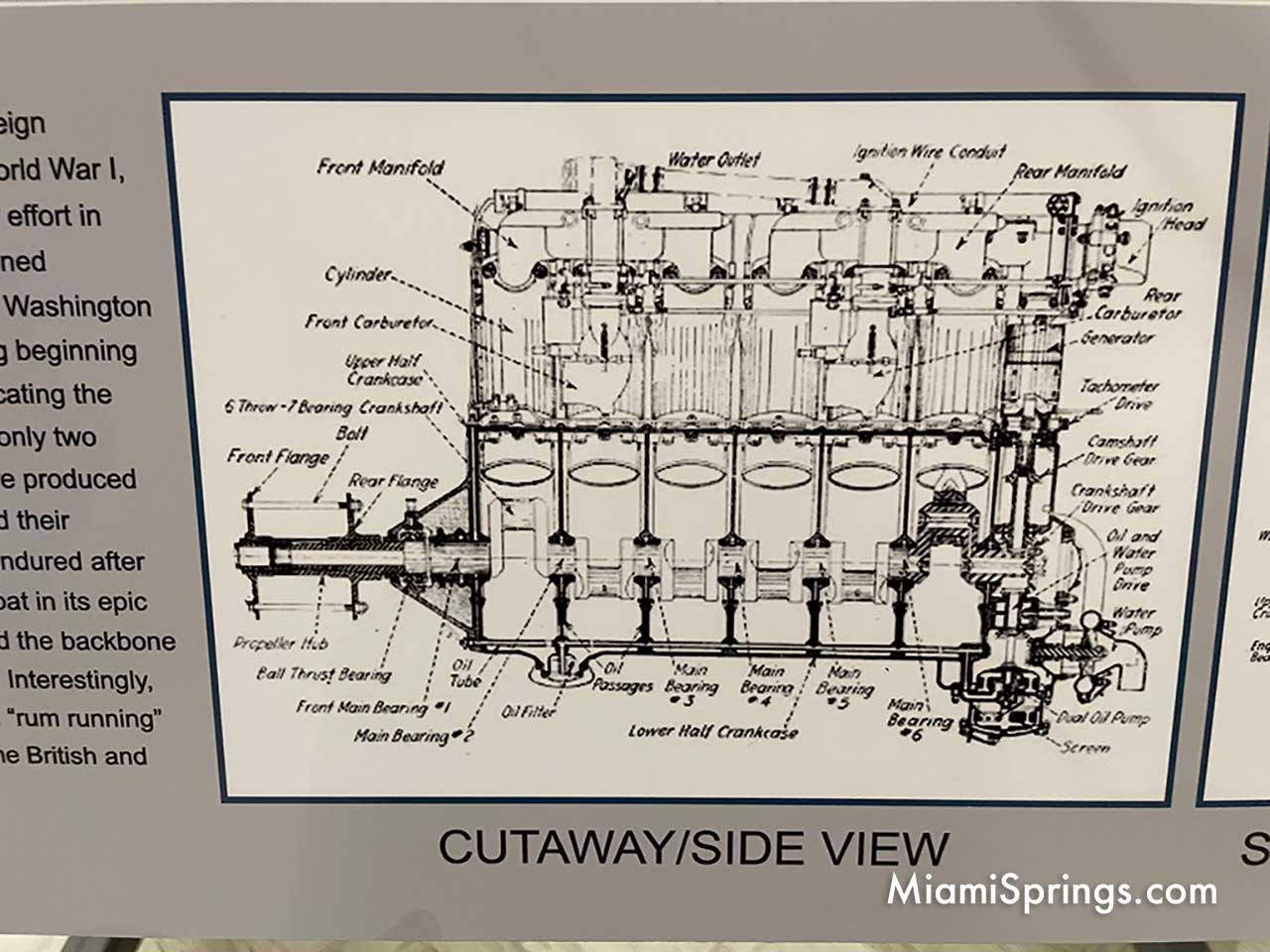
In addition to its use in aircraft, the Liberty engine was also used in a variety of other applications, including as a power plant for boats and as an engine for early tanks.
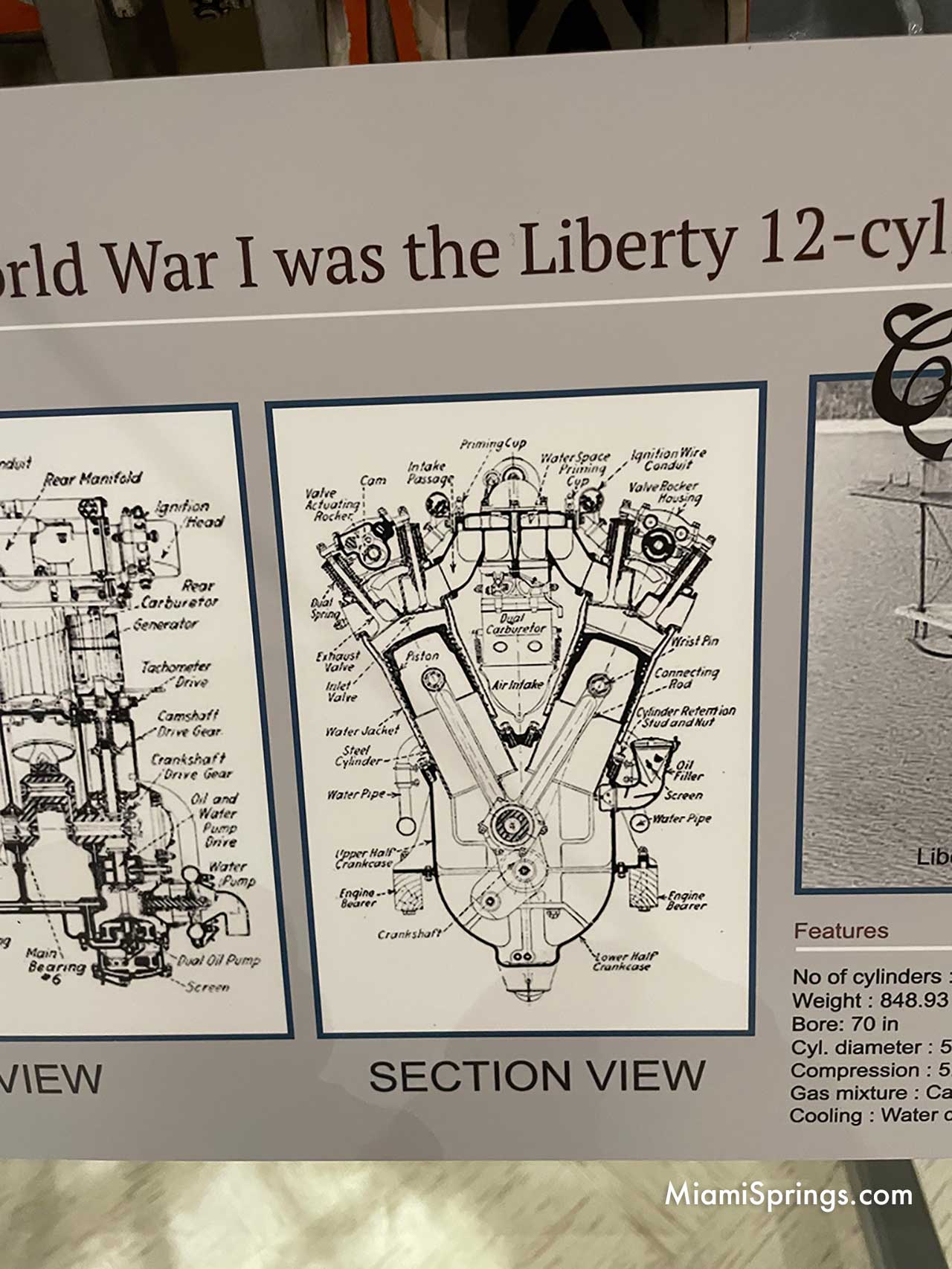
EUGENE ELY
It turns out Eugene Ely was instrumental in helping Curtiss vision of naval aviation to come to reality.
Ely began his career as a stunt pilot, performing at air shows and exhibitions across the United States. In 1910, he became the first person to fly an aircraft from a ship when he took off from a temporary platform on the deck of the cruiser USS Birmingham in Hampton Roads, Virginia. He landed safely on the shore nearby.
Two years later, in 1912, Ely became the first person to land an aircraft on a ship. He landed his Curtiss Model D “pusher” biplane on the deck of the armored cruiser USS Pennsylvania in San Francisco Bay, California. This feat was accomplished using a hook and a system of ropes and pulleys that stopped the aircraft on the deck.
Ely’s pioneering work in aviation helped to demonstrate the potential of aircraft for military and naval applications, and it helped to pave the way for future developments in naval aviation. He continued to fly and perform until his death in a crash during an air show in Macon, Georgia, on October 19, 1911, just two days before his 25th birthday.
In recognition of his contributions to aviation, Ely was posthumously awarded the Distinguished Flying Cross in 1933. He is also remembered through several memorials, including the Eugene Ely Memorial Plaza at the Naval Air Station North Island in San Diego, California, and the Eugene Ely Park in Davenport, Iowa.
GLENN CURTISS
The National Naval Aviation Museum’s artifacts only scratch the surface at all the amazing accomplishments Glenn Curtiss achieved in his short life. Some of those accomplishments include:
- 1907 – Fastest Man on Earth (1907 – 1911)
In January 1907, Curtiss piloted a V-8 motorcycle of his own design to a record speed of 136.4 mph. The man was a daredevil and a genius. His record held on till 1911 when it was beat by an automobile. The motorcycle land speed record stood until 1930.
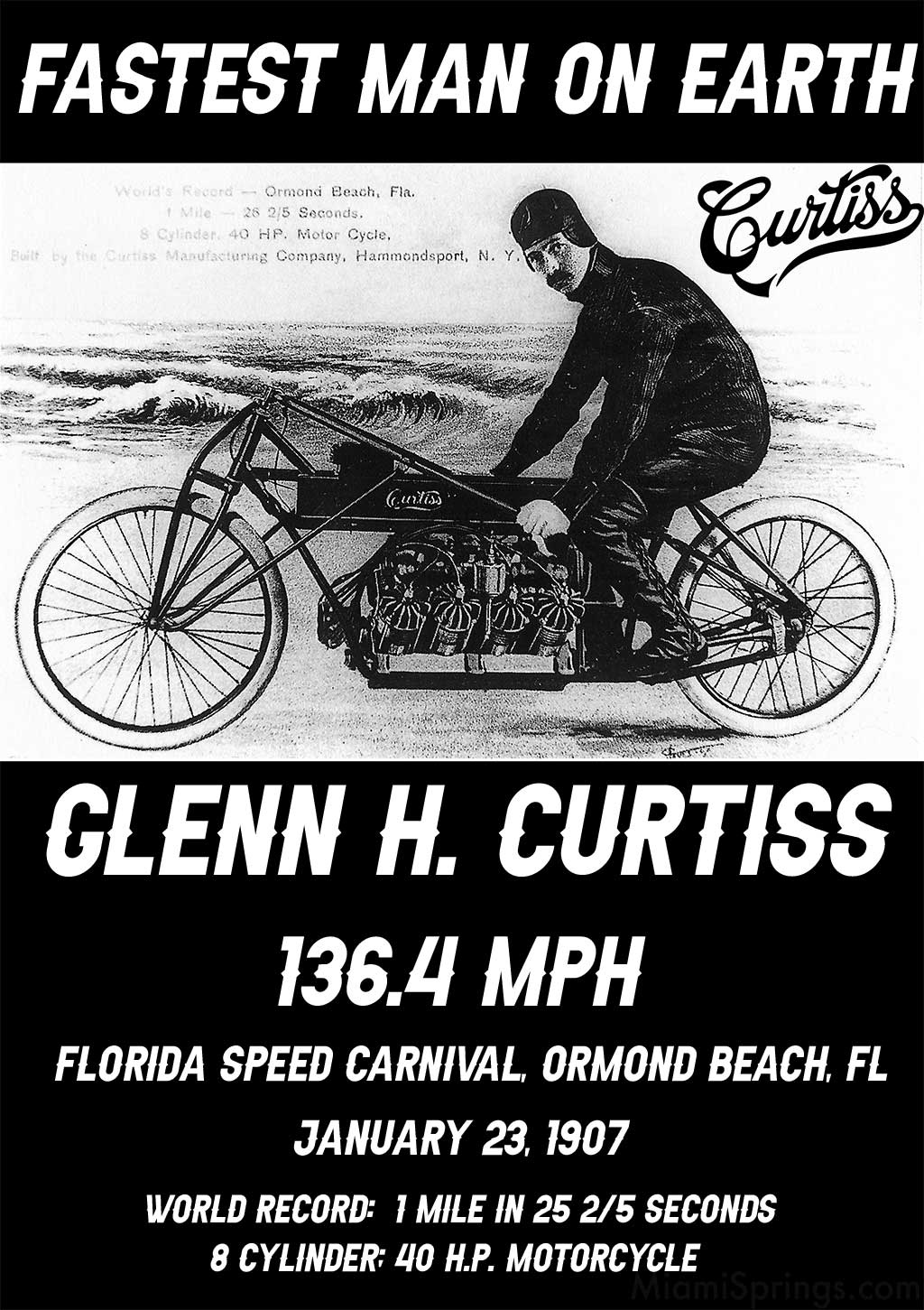
- 1908 – The first public flight demonstration of a powered aircraft used a lightweight Curtiss engine
- 1908 – Developed ailerons, the hinged surface at the edge of airplane wings still used today. By comparison, the Wright Brothers used “wing warping” which was okay for the cloth materials of the day, but would not be used as planes developed into wooden and metal wings.
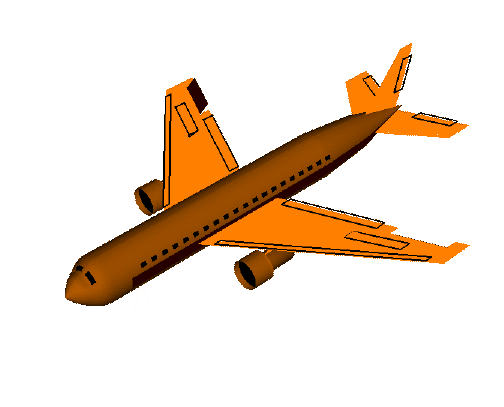
- July 4. 1908 – Flight of the June Bug – “The first officially-recognized, pre-announced and
publicly-observed flight in America. He flew 5,090 feet with over 1,000 people watching.”
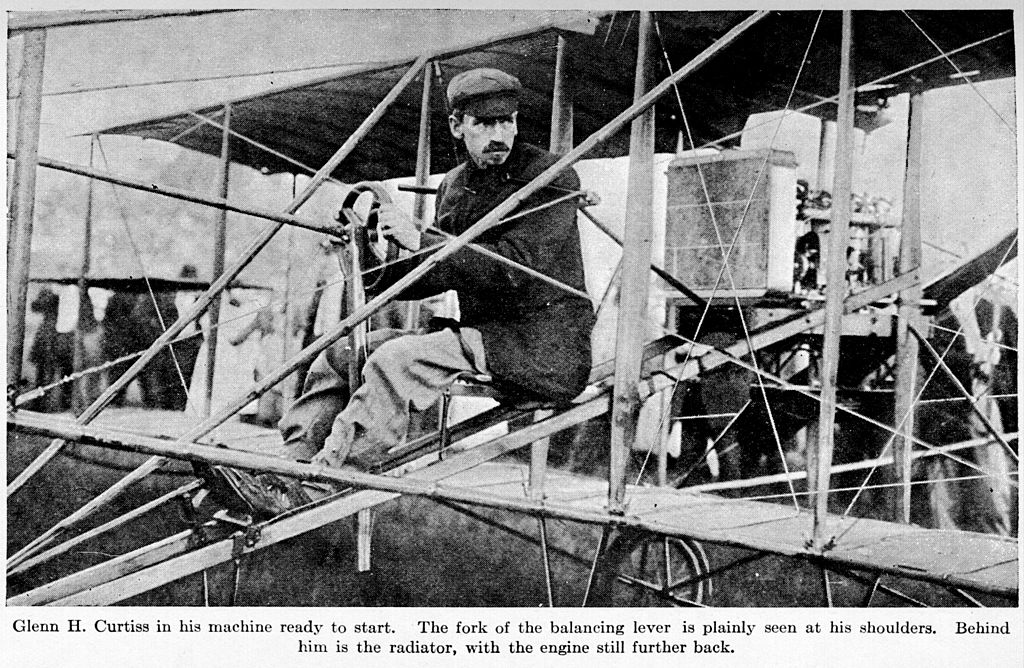
- 1911 – Developed the first seaplane which is why Curtiss is also known as the father of Naval Aviation. Between 1911 – 1914, the Navy purchased 14 different versions of the Curtiss Triad seaplane.
- 1914 – 1918 – World War I – The Curtiss JN-4D “Jenny” was used to train American and Canadian pilots how to fly. In fact, it’s estimated 95% of North American World War I pilots learned to fly in a Jenny.
- 1916 – Glenn Curtiss thought the area to be desirable for starting a flying school and purchased 17,000 acres of land with his partner James Bright of what we now know as Hialeah, Opa-Locka, and Miami Springs.
- 1919 – The first aircraft to cross the Atlantic. The Curtiss NC-4.
- 1920 – Curtiss moves to Florida
- 1922 – The Curtiss Bright Company begins construction of the Miami Springs Golf and Country Club. It was completed in the fall of 1923.
- October 13, 1924 – TIME Magazine Cover
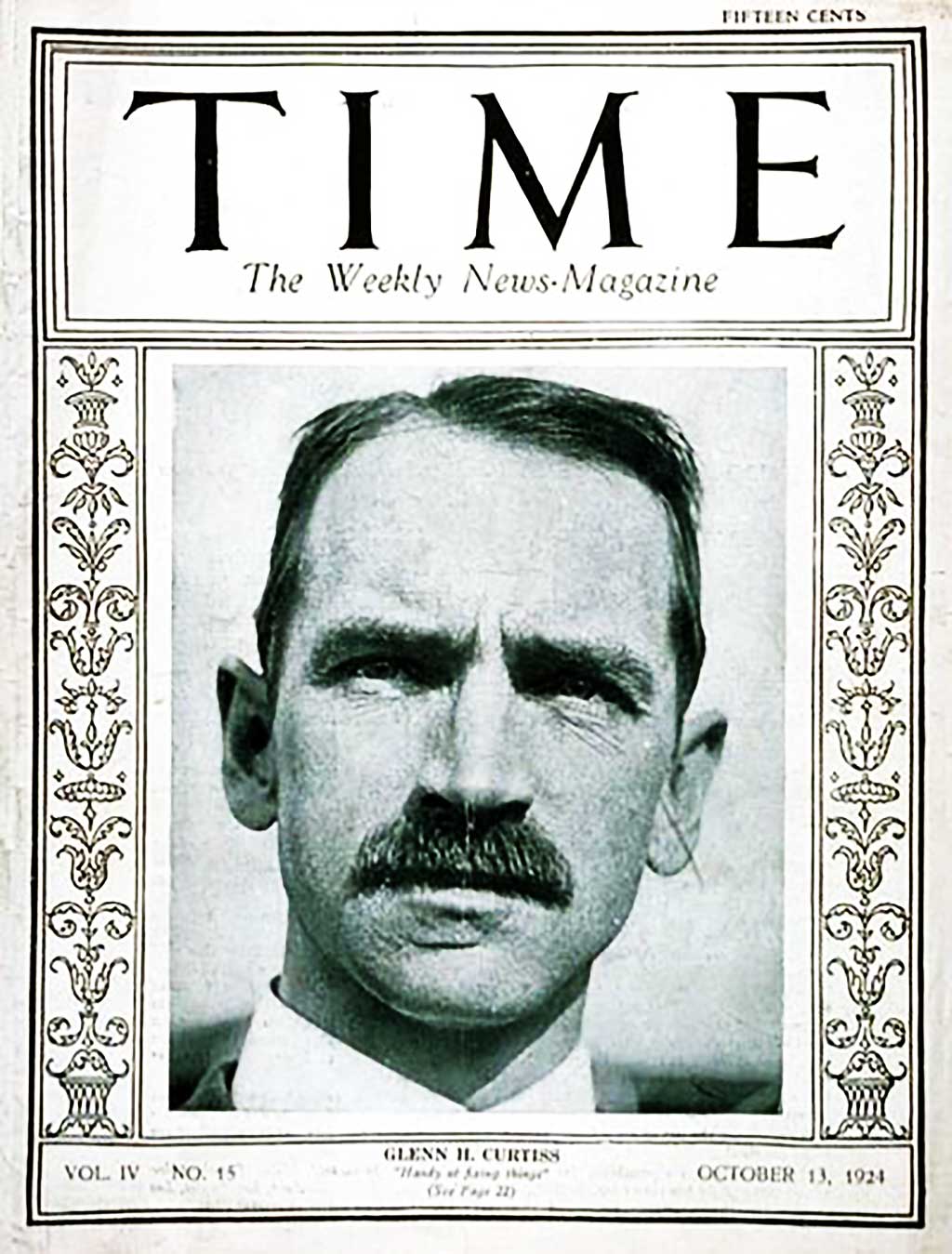
- 1925 – Built the Curtiss Mansion in Miami Springs
- 1925 – 1926 – Glenn Curtiss co-founded the the City of Hialeah, the City of Opa-Locka, and the City of Miami Springs.
- 1920s – Glenn Curtiss developed the Aerocar seen below at the Curtiss Mansion
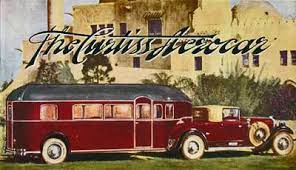
- July 23, 1930 – Curtiss dies at the early age of 52 from complications of appendicitis. Yeah, Curtiss did everything you see above and more before the digital information age we live in today. The closest person to compare him today is an Elon Musk, except that Glenn Curtiss was much more of a daredevil and an incredible…badass!
These are just a few of Glenn Curtiss’ major accomplishments, and there were many others throughout his career. His innovations and contributions to aviation helped to shape the course of flight and technology in the early 20th century.
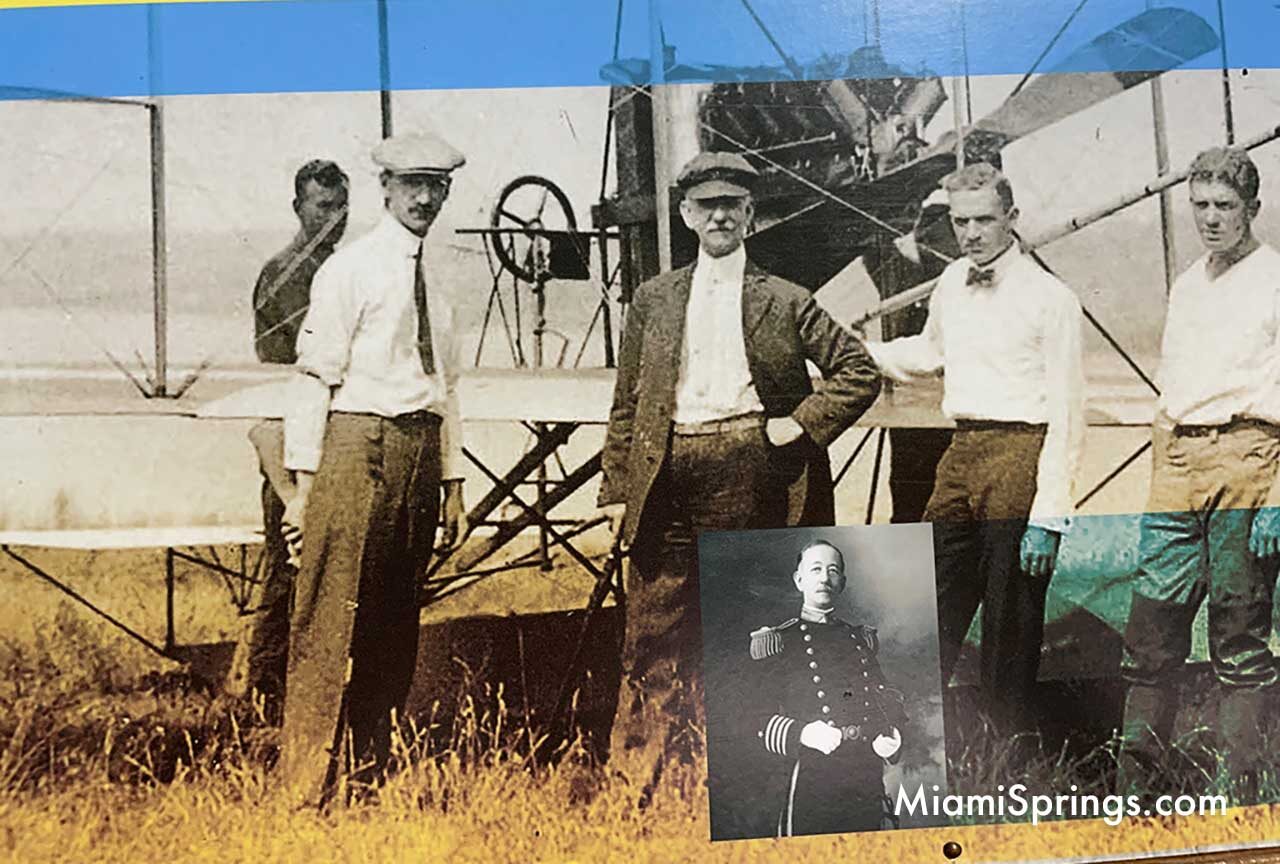
Does Glenn Curtiss deserve a Statue in Miami Springs?
Glenn Curtiss deserves a statue with a plaque to commemorate him before our 100 year anniversary arrives.
As for funding sources, we can look for grants and donations from organizations such as the Curtiss Museum, the Curtiss Wright Company, the Smithsonian, the State of Florida, the Federal Government. Point is, we’ll never find the money until we have a plan to actually do it. We can even build a Go Fund Me page to raise online revenues.
What do you think? Does Glenn Curtiss deserve a statue in his honor along Curtiss Parkway?
Let’s make it happen.















